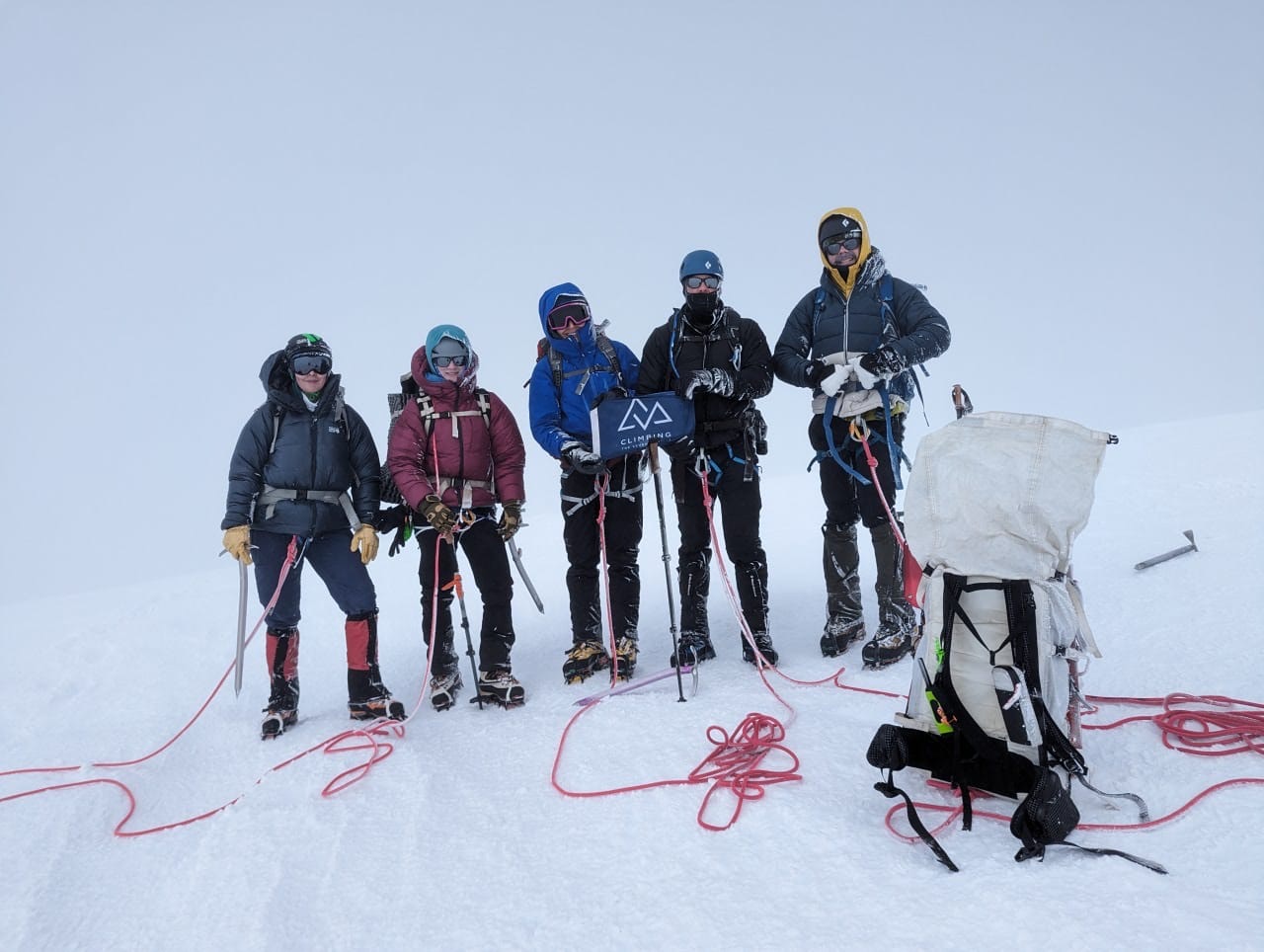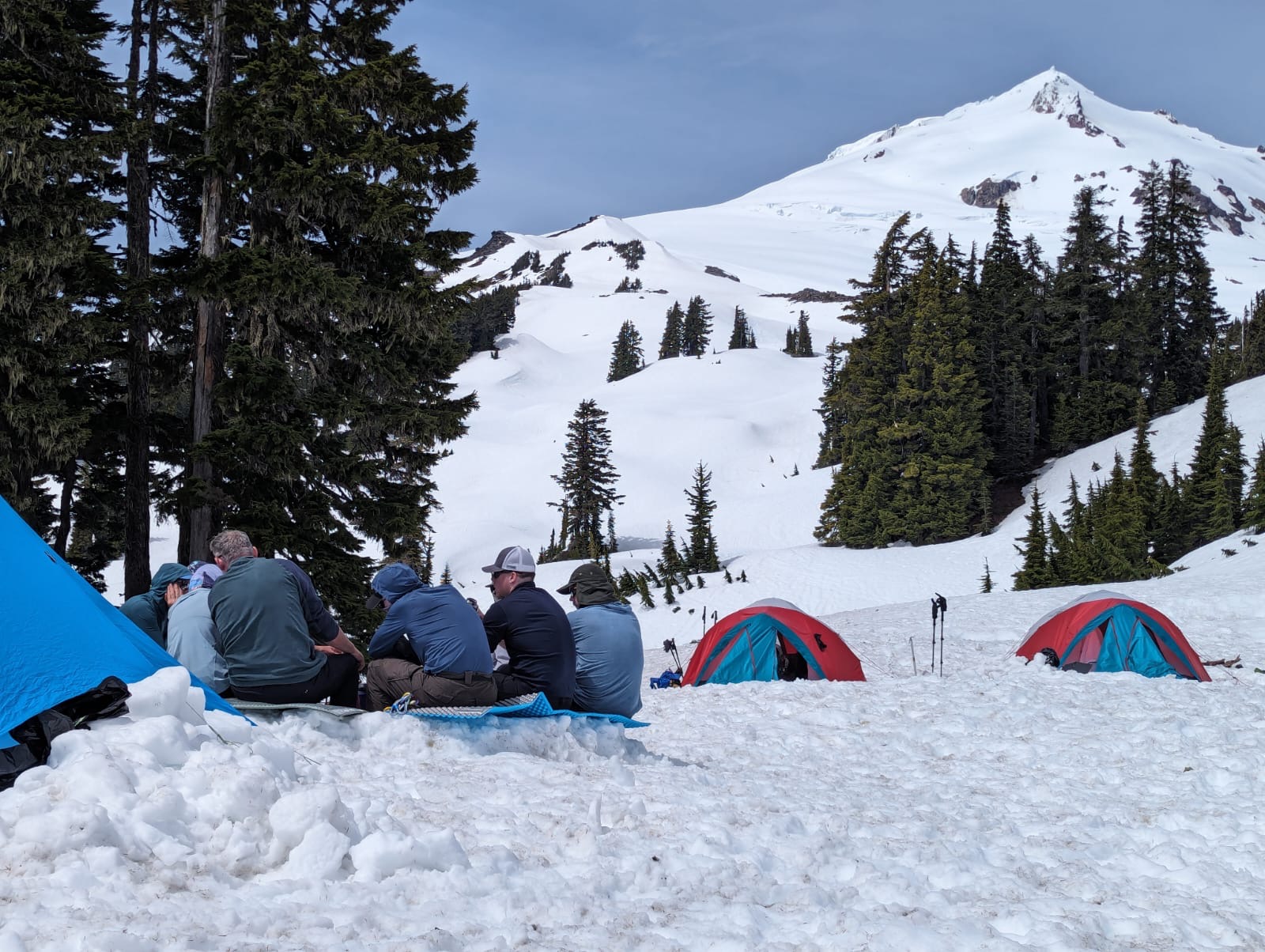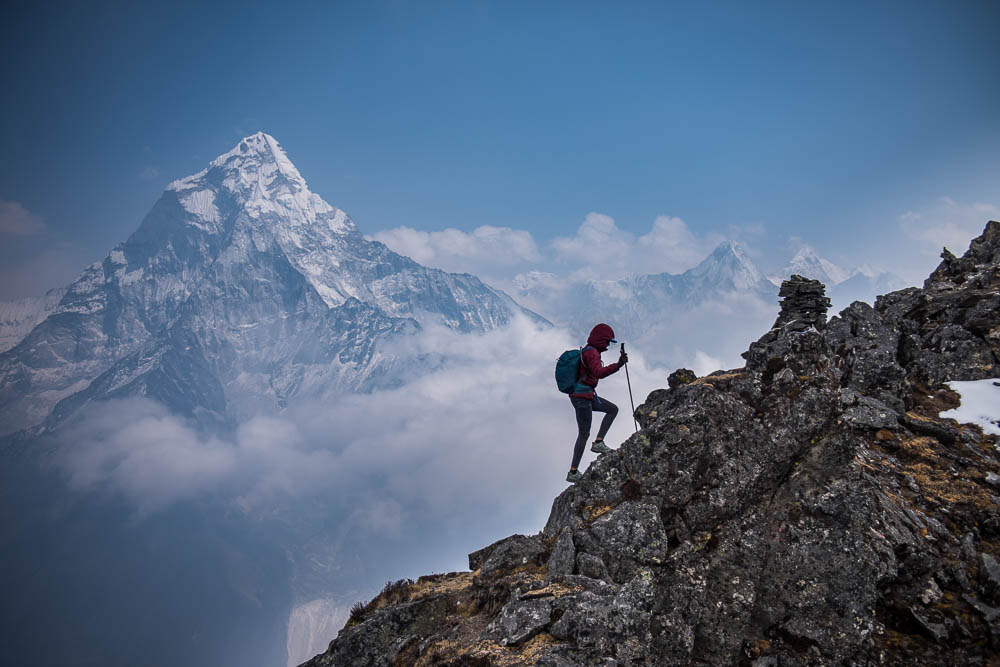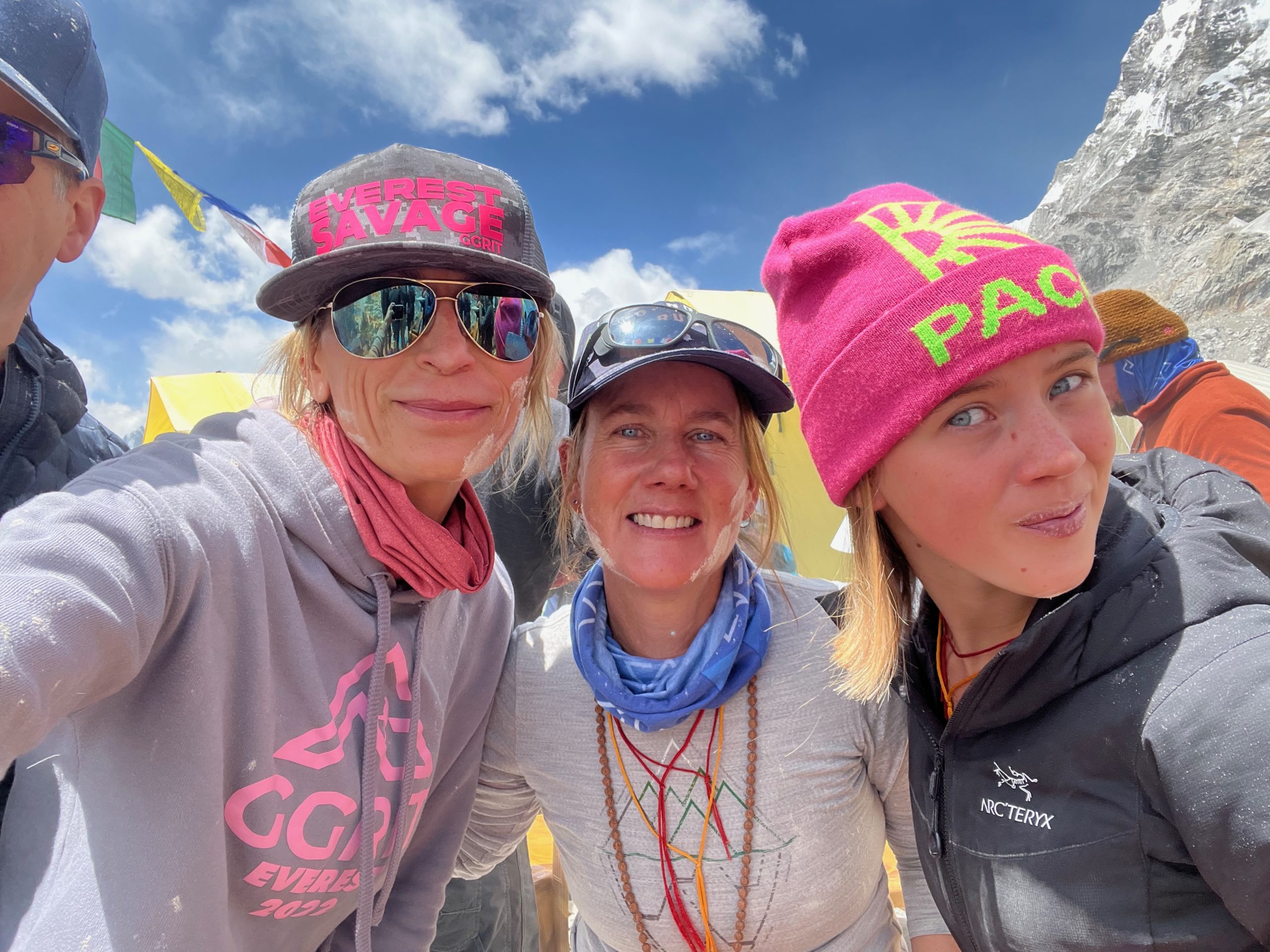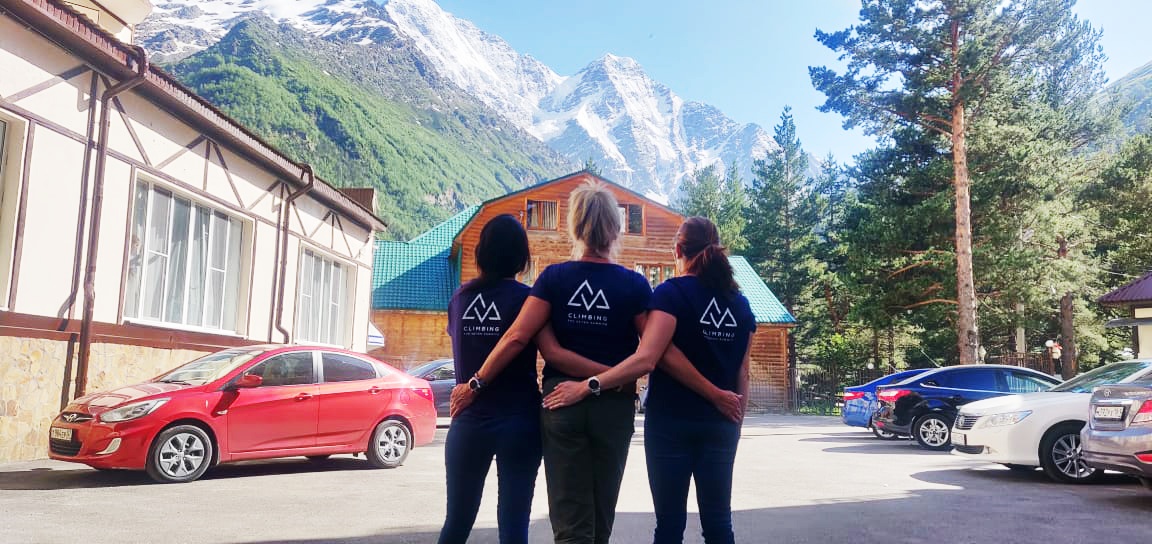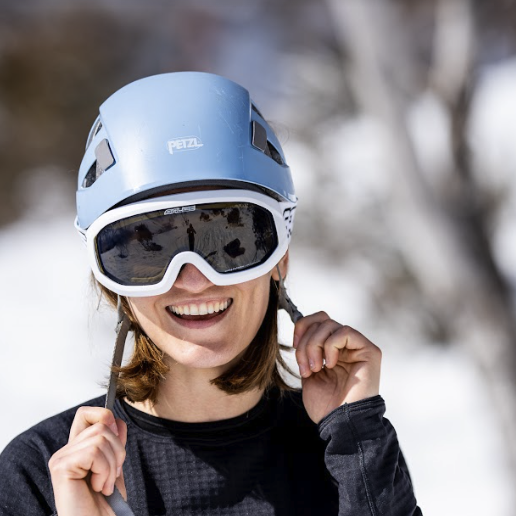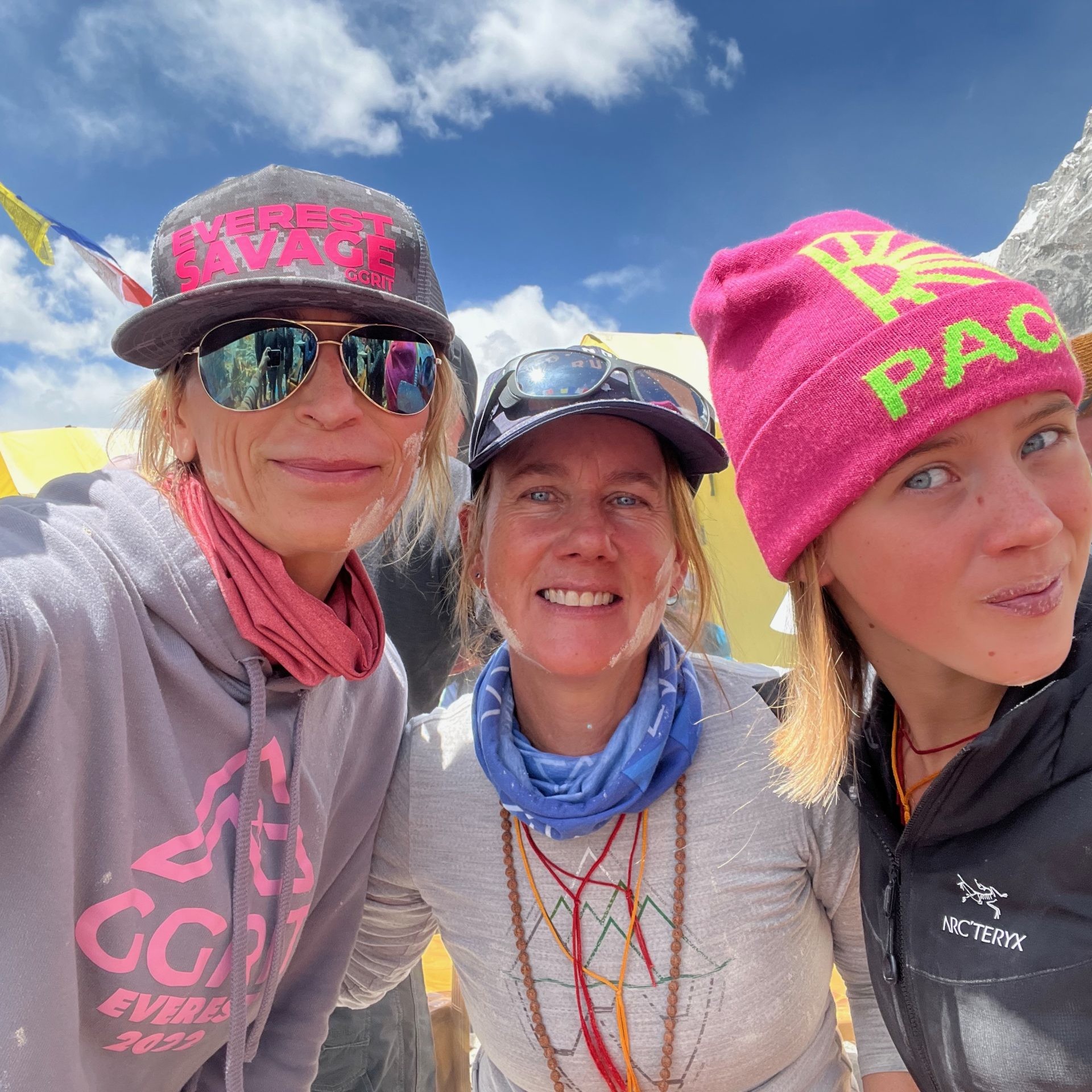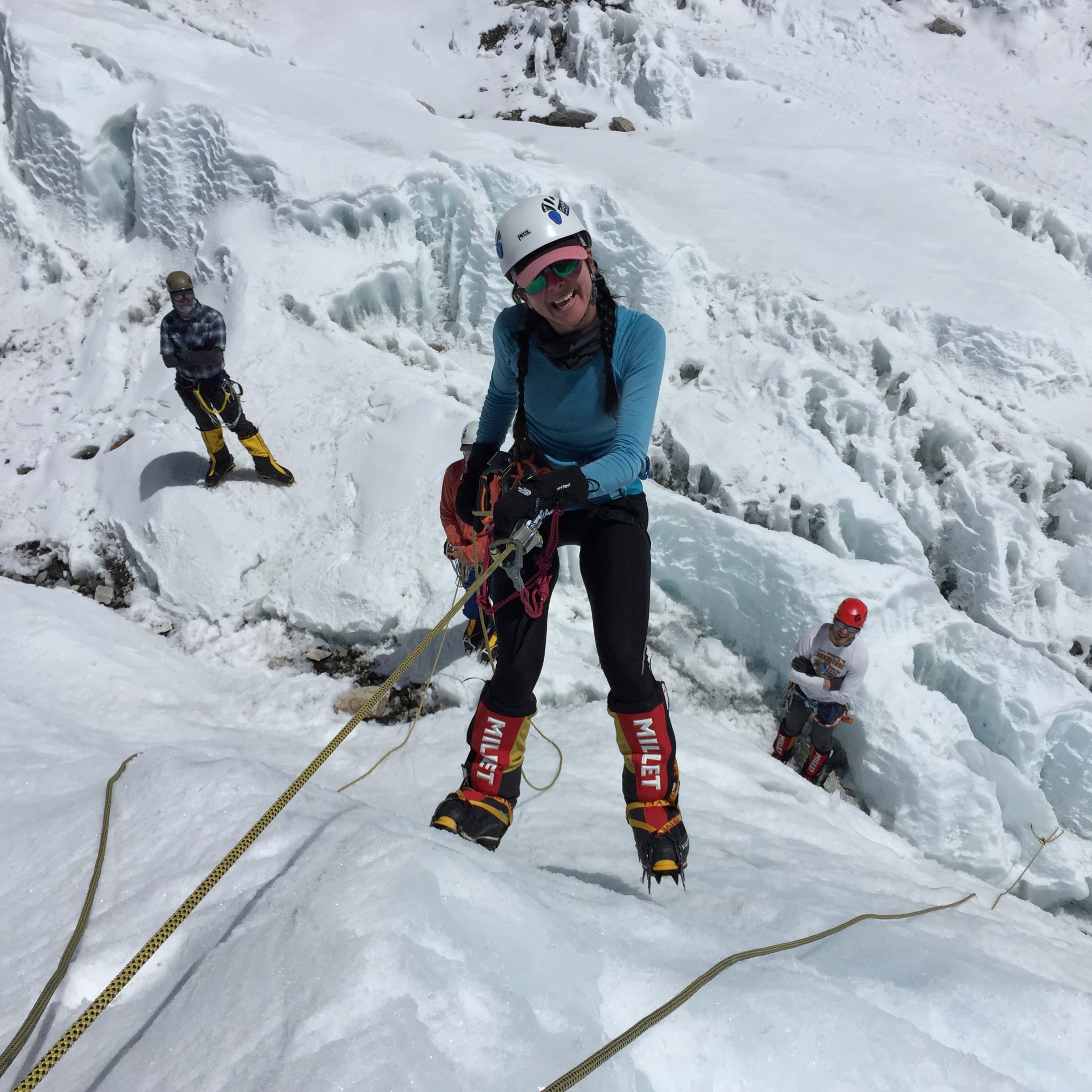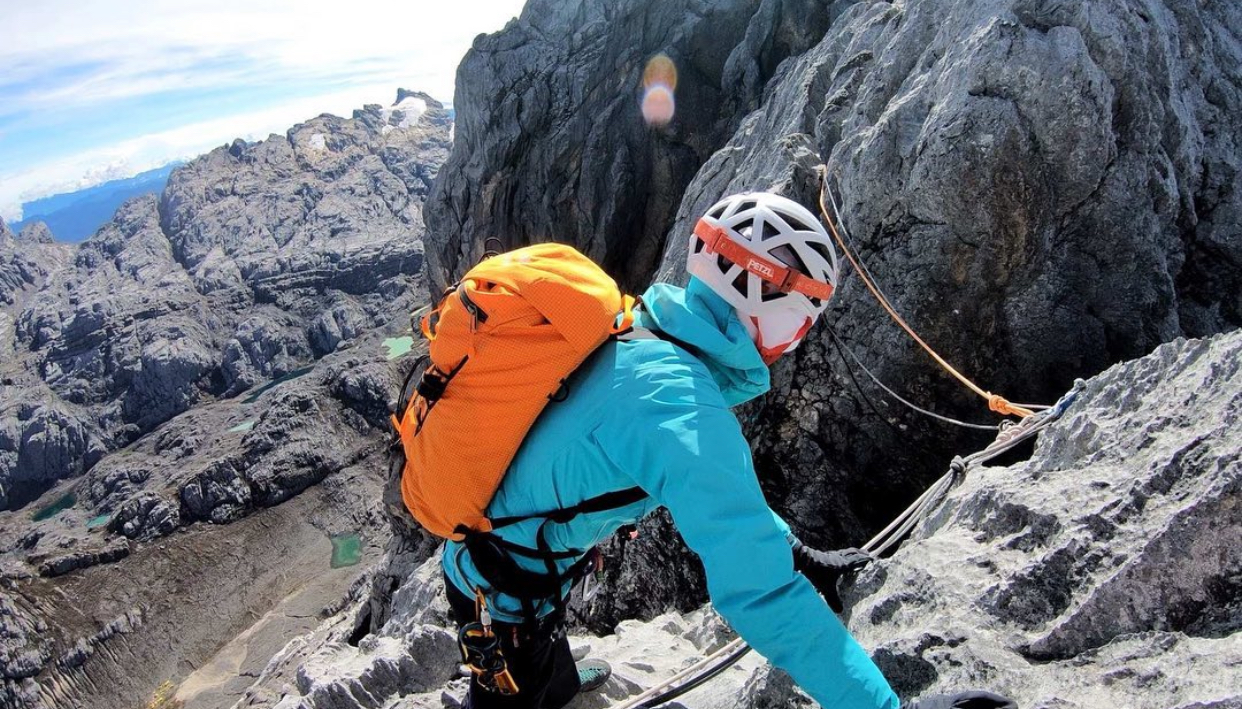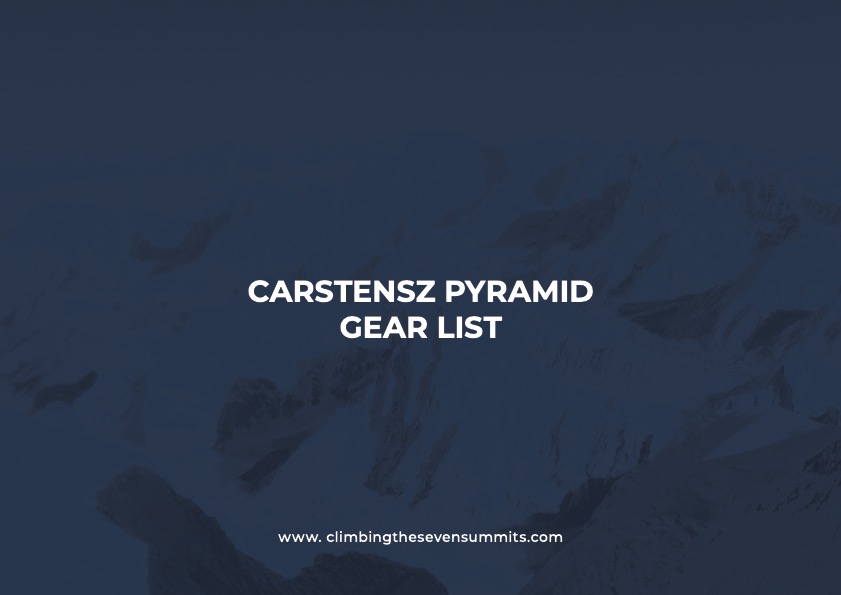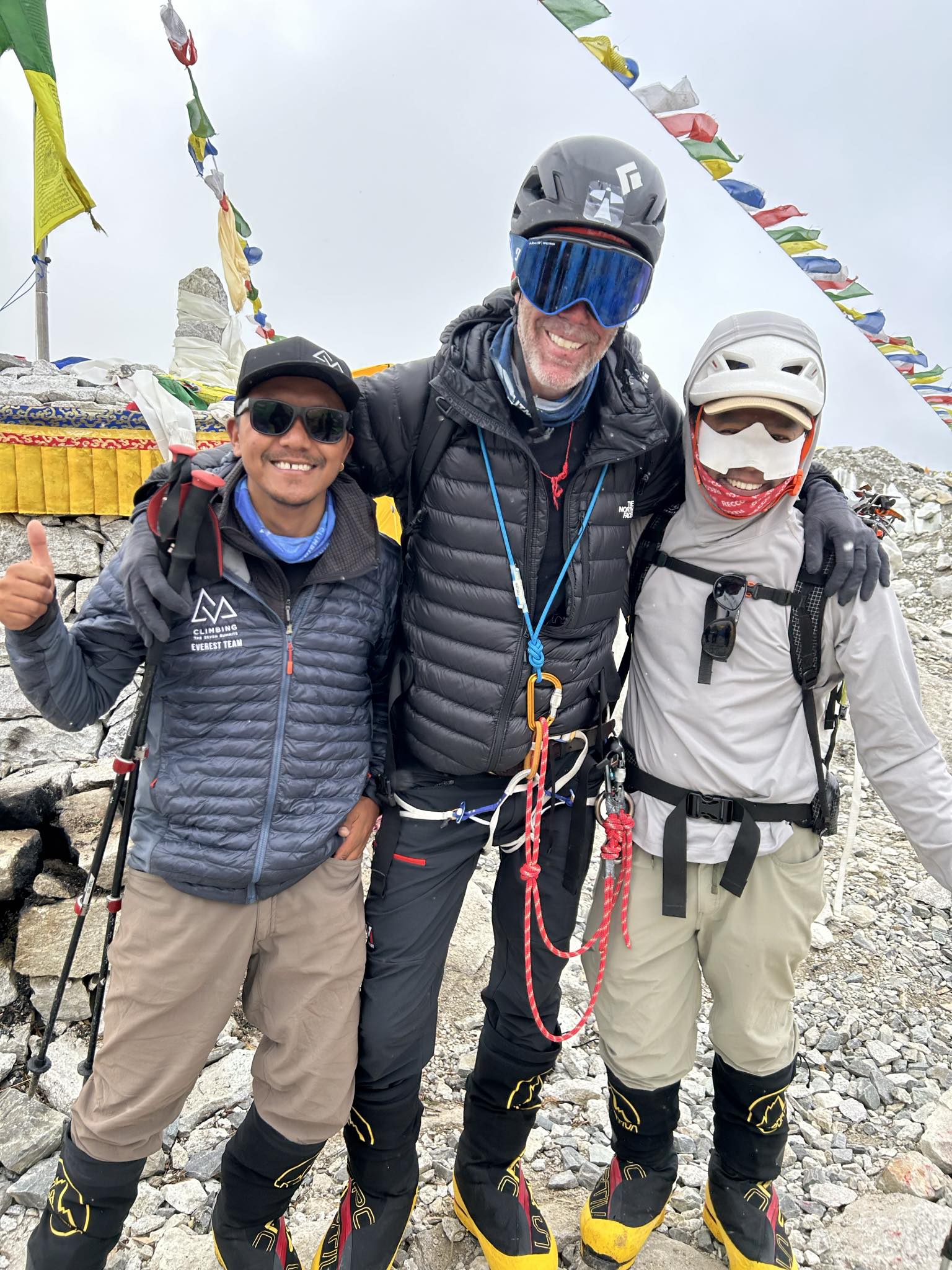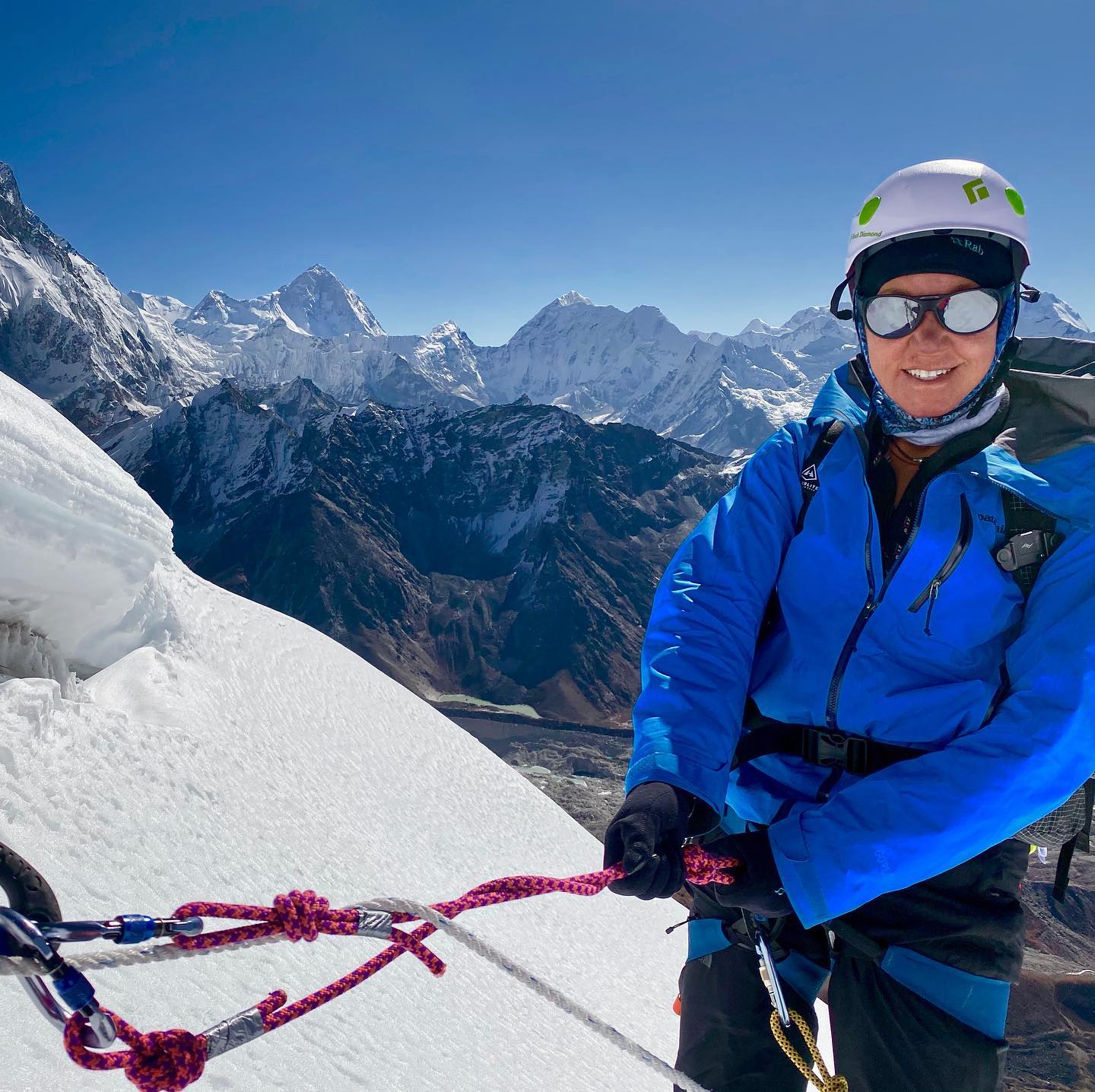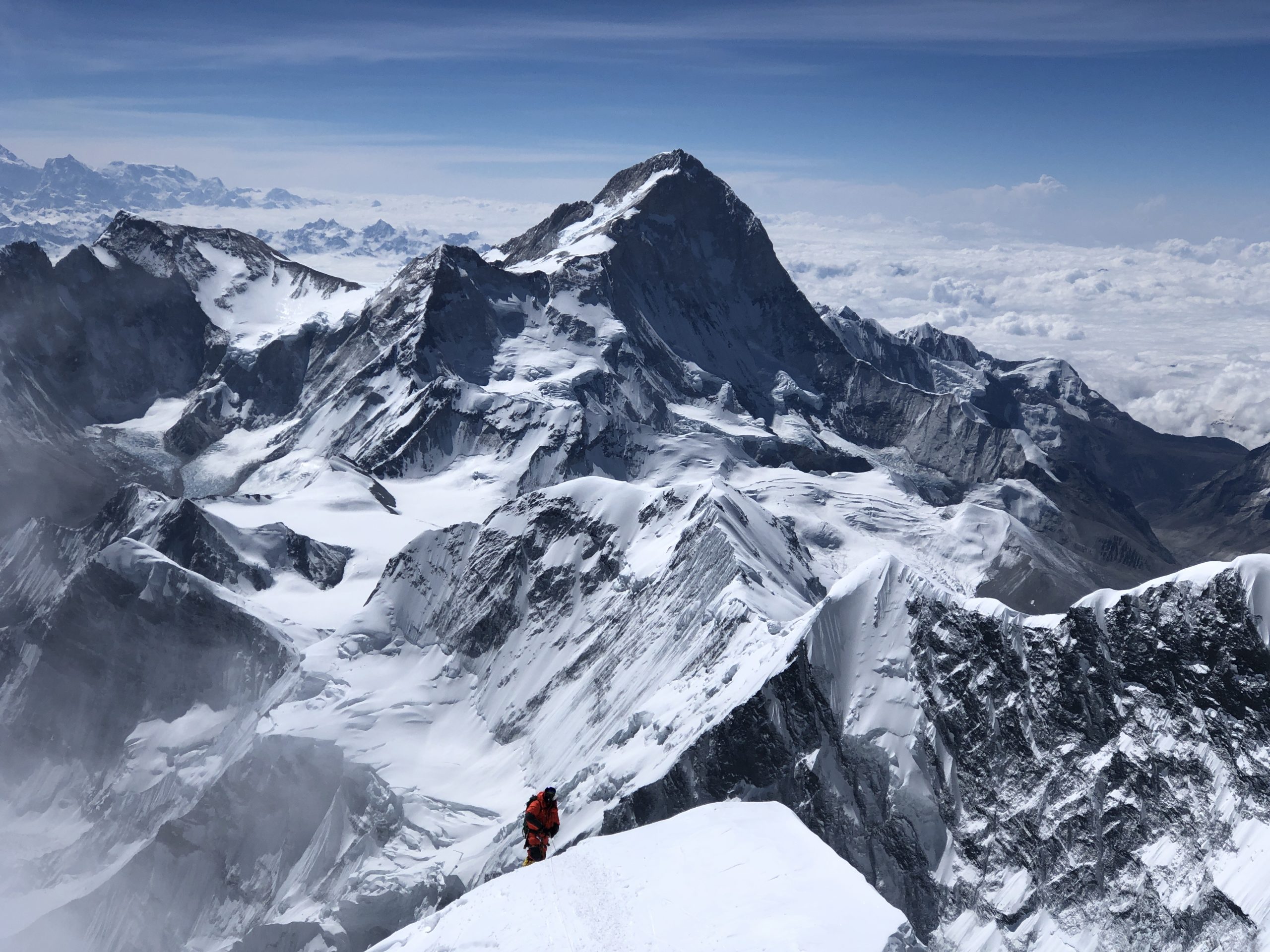Summit Success on Mount Baker!
Today, the team climbed in mostly whiteout conditions, with a bit of morning light during the ascent. The snow was sloppy and wet, but the team persevered, with six climbers reaching the summit.
Congratulations to:
- Zoe W.
- Trenton S.
- Susan W.
- Jared H.
- Guide Caya J.
- Guide Robert J.
CTSS guide Robert checked in and said the team had returned to base camp. It was a big day for all, but we’re excited for a few more days of our Alpine Academy on Mount Baker! Photo Credit: Robert Jantzen
 Morning light while ascending on Mount Baker.
Morning light while ascending on Mount Baker.
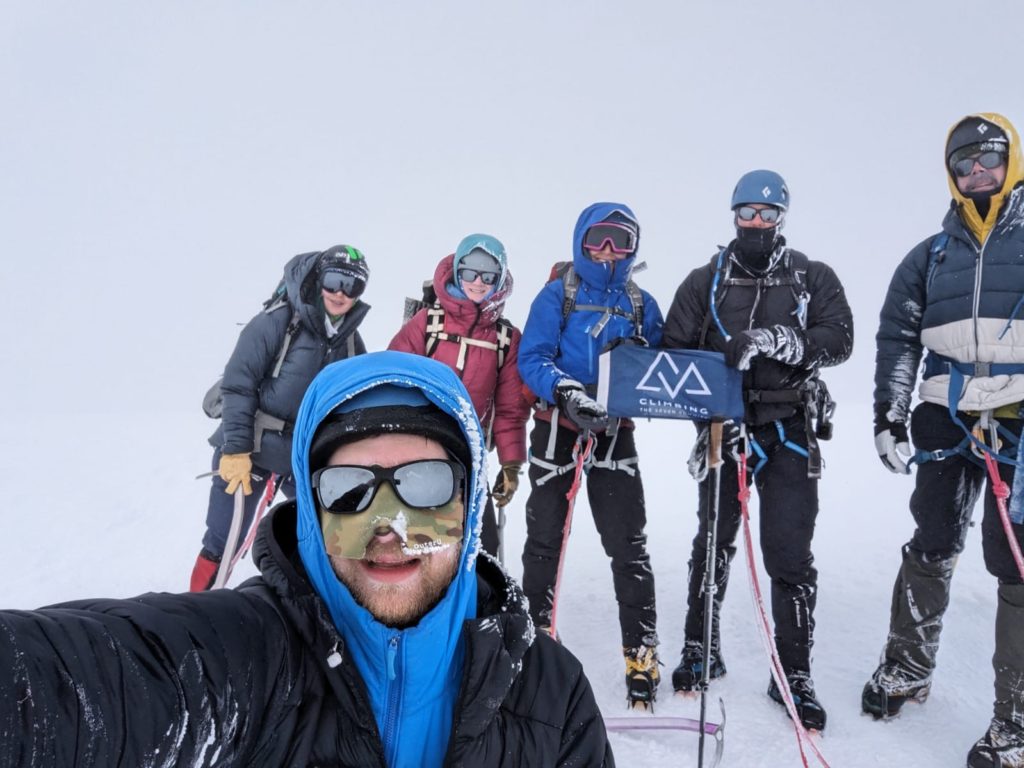 Summit success! Congratulations to all our climbers!
Summit success! Congratulations to all our climbers!
Mount Baker Alpine Academies Begin!
Our annual Alpine Academies have kicked off on Mount Baker, arguably one of the world's best mountaineering classrooms. After a full day of rope skills, our team plans to ascend to the summit of Baker today, weather dependent. Guide Robert reports that everyone is doing well and ready for the summit climb, and we wish the team the best of luck!
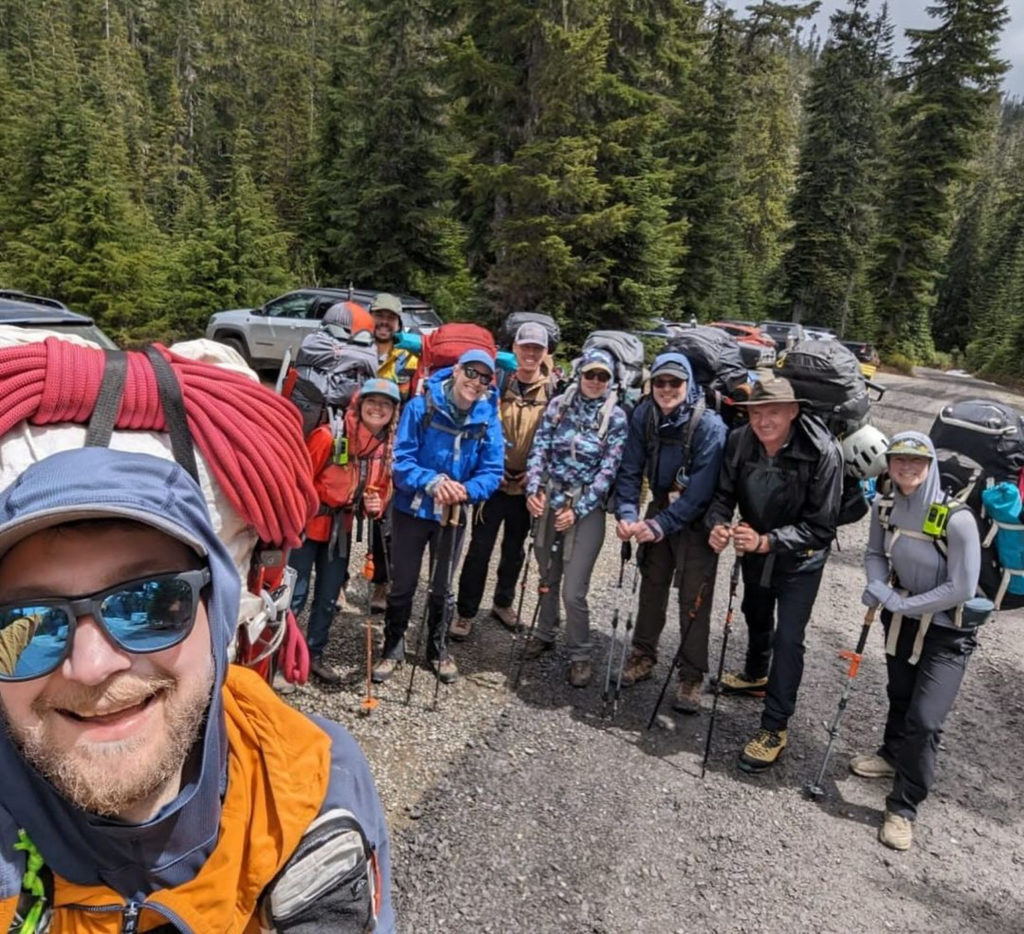 Good luck to Mount Baker team! Photo: Robert Jantzen
Good luck to Mount Baker team! Photo: Robert Jantzen
The photo below, which we love, absolutely epitomize our Alpine Academies—using the natural landscape as a place to learn and practice practical mountaineering skills for real mountain applications. To those down under, we also offer a similar program on Mount Kosciuszko through our Australian Alpine Academy.
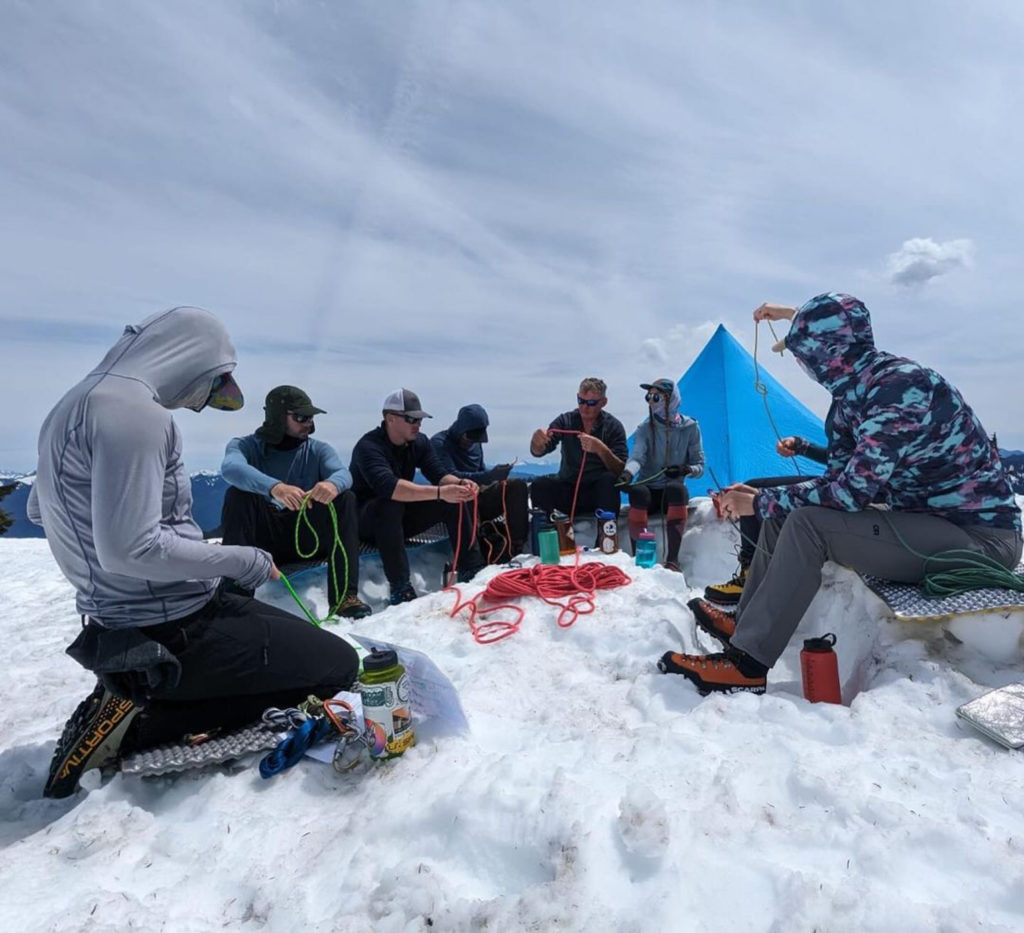 Mount Baker Alpine Academy in full force! Photo: Robert Jantzen
Mount Baker Alpine Academy in full force! Photo: Robert Jantzen
Survey Thank You
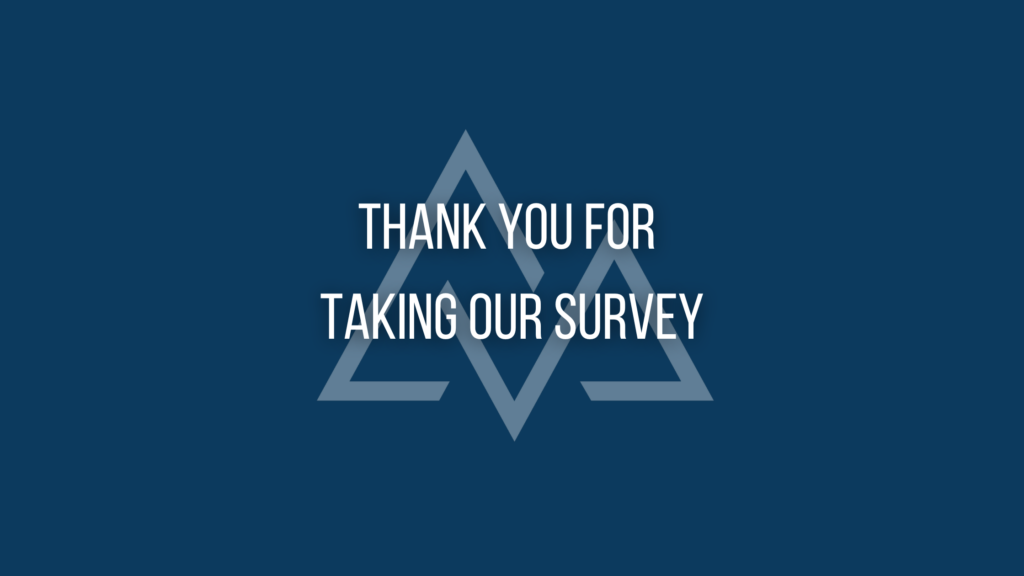
To learn more about our all-women’s expeditions that we currently offer click below:
All-Women’s Mount Baker Alpine Academy
All-Women’s Australia Alpine Academy
Women in the Big Mountains
Women in the Big Mountains
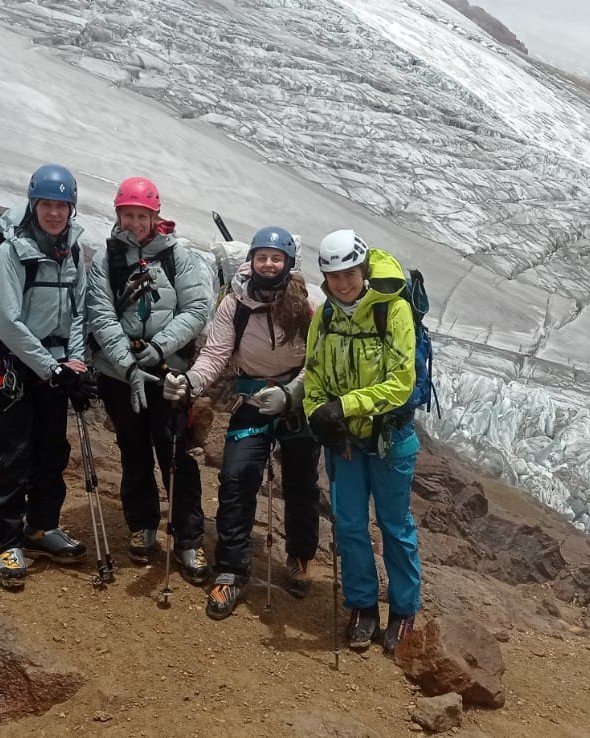
In light of the recent article by the New York Times piece, For Female Climbers, Dangers Go Beyond Avalanches and Storms, we want to talk about women in the big mountains.
First, the team at Climbing the Seven Summits (CTSS) wants to acknowledge that women face an unprecedented level of risk and uncertainty regarding sexual harassment and abuse in the big mountains and within the climbing community as a whole.
We want every woman to know that CTSS hears you, sees you, believes you, and supports you.
When it comes to the great outdoors, very few women haven’t experienced some level of microaggressions, harassment, and/or abuse from their male counterparts. This is why CTSS also wants to highlight the tangible efforts made by our team to help make the mountains a safer and more welcoming place for all women.
As a company, we strive to understand the reality of what women experience in the greater climbing community, and we do this by learning from our own experiences (CTSS is proud to have a strong female presence) and listening to other women. By continually learning, listening, and seeking more knowledge, we will continue to shape and evolve our own expeditions, summit teams, guiding teams, and internal policies to support all women who step foot on the mountain. It’s our hope that by having these conversations and paying attention to what’s happening (as opposed to sweeping it under the rug or using the dreaded “boys will be boys” phrase) that, CTSS will continue to be on the side of history that holds the entire outdoor industry to new and most certainly a better standard.
Imbalance of Power
Similar to the power imbalance that happens between a doctor and patient or a professor and student, there can also be a power imbalance between a client and a guide. This imbalance is painfully evident in the allegations detailed in the article above. There is no doubt that a client who spends $60,000 on an expedition to the summit of Mount Everest is in the hands and subject to the goodwill of their guide. The client has good reason to want to make their guide happy—they paid big money; if their guide is upset or angry, it could risk the entire expedition, and their survival and safety are quite literally in the hands of the guide. For women, pairing that with unclear or non-existent regulations within an expedition company or a country regarding sexual harassment and abuse means that some guides take advantage of this. Women are often left without many options to advocate for themselves in these situations.
Because of this imbalance in the big mountains, CTSS has taken a number of proactive steps to ensure the safety and comfort of all of our female climbers and push the mountaineering world toward a new way of supporting female clients. We recognize that women have a unique set of needs that need to be met with compassion and understanding in the climbing industry.
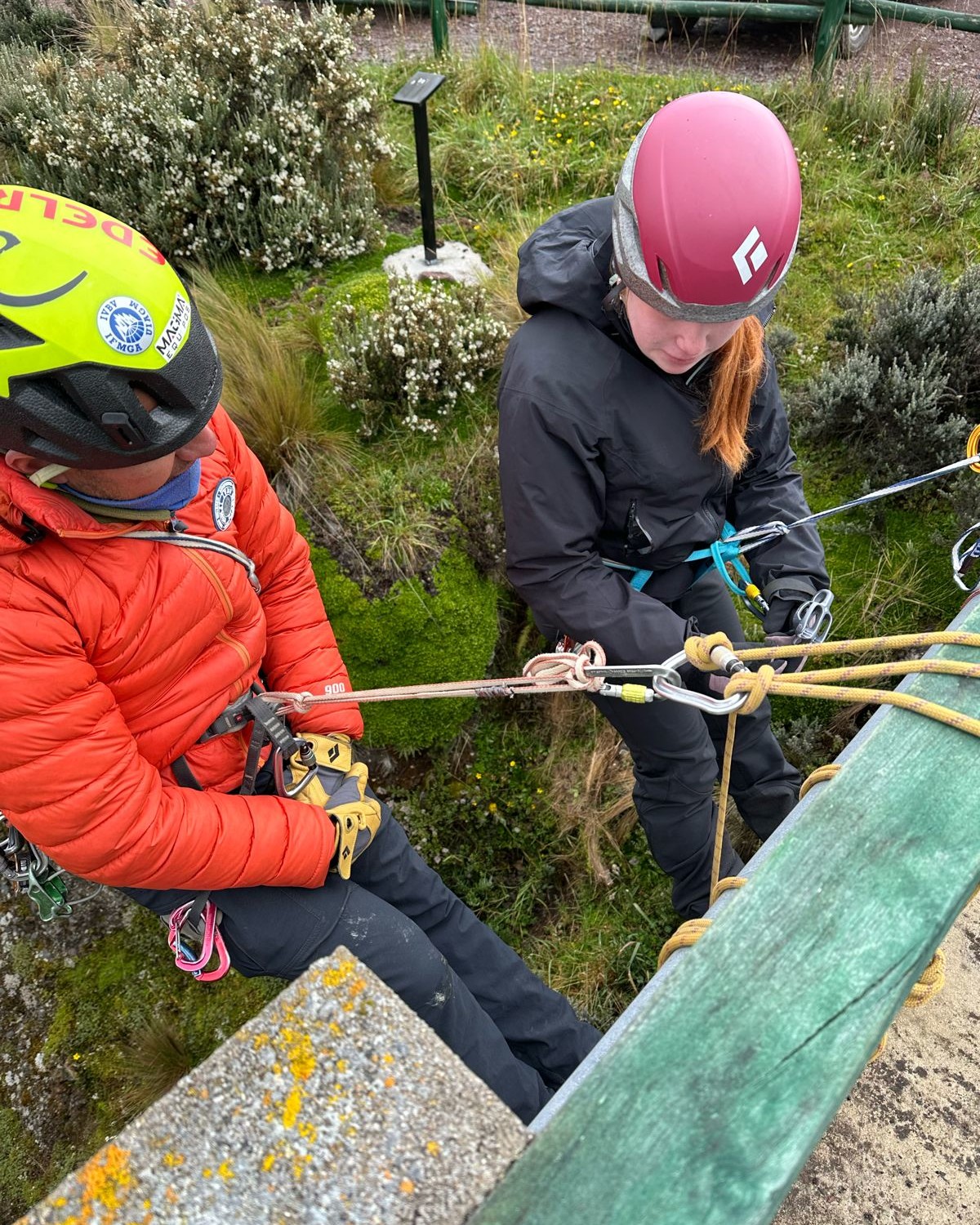
How CTSS Supports Women
Climbing the Seven Summits is proud to support women climbers in the following ways:
- CTSS is 50% women-owned and operated, and our Program Management team is 100% women-operated. This means that any women who join our expeditions will more than likely be met with another woman on the other side of their email or phone call. We know that starting on the right foot with our one-to-one communication style helps put women climbers at ease.
- Our Guide team is 20% women-led, and we are actively working to recruit more female guides. All of our guides at CTSS sign our Guide Code of Conduct & Ethics, which includes clauses on physical and emotional safety as well as harassment, intimidation, and abuse. In addition, all climbers sign a CTSS Code of Conduct, which also includes clauses on physical and emotional safety, as well as harassment, intimidation, and abuse. Both Codes of Conduct provide climbers and guides a clear pathway for submitting and reporting any behavior that violates these policies to the CTSS team. Any climber or guide found in violation of the CTSS Code of Conduct will be expelled from the expedition and/or barred from future expeditions.
- CTSS offers both of our introductory mountaineering skills courses in an all-women’s format, including our Mount Baker and Australian Alpine Academies. We know that being in a safe space of like-minded people is empowering, and we want all women to have this opportunity, which is why we’ve partnered with AWExpeditions, an all-female mountaineering company, to help provide guidance and support for our women-centric climbs.
- All CTSS female clients receive a Female Client Considerations document when they join an expedition team. In addition, we have a section on our website devoted to considerations for women in the big mountains. We want to talk about and share resources that dive into the things that most guiding companies leave out of their pre-trip packets. Things like periods, pee clothes, and sports bras are just as important as your ice axe and helmet.
- CTSS has a firm No D*ckheads Policy. We use this policy to assess and vet all members of every expedition. Through our experiences in the mountains, we know that summiting a peak requires more than just physical fitness. It also demands enormous mental strength, commitment, and, most importantly, deep humility. We believe that our success in the mountains is directly attributed to the time we spend getting to know each climber as well as our hand picked staff that exemplifies the type of character, work ethic, and humility we hold our expeditions to.
- As of 2024, CTSS is close to reaching 50% female clientele on each expedition. Our past female climbers have felt the positive impacts of the environment we choose to uphold on all of our expeditions, including Meghan Buchanan, who completed her quest to summit all Seven Summits last year. Check out Meghan's testimonial here.
Final Thoughts
Here at CTSS, we know that there are many ways to support female climbers, and we are just hitting the tip of the iceberg as a company. To all women, far and wide, it’s our promise to continue listening, learning, and doing more to support all of you on your mountaineering journey. To the outdoor industry, we hope that you will join us in celebrating and uplifting women in the big mountains.
Carstensz Pyramid: Your Top Five Questions Answered
Carstensz Pyramid: Your Top Five Questions Answered
Carstensz Pyramid is one of the world’s great adventures and a dream for many climbers.
Having been closed since 2019, Carstensz Pyramid has reopened for the first time with a limited number of operators receiving authorization for this season, Climbing the Seven Summits (CTSS) included. Your opportunity to climb one of the most elusive of the Seven Summits has arrived!
To help potential climbers better understand what it means to take on a climb like Carstensz Pyramid, we asked Mike Hamill, owner of CTSS and author of Climbing the Seven Summits, and the talented team at CTSS to answer a few of the most common questions we field about Carstensz Pyramid.
What type of rock climbing skills do I need?
Even though Carstensz Pyramid is one of the lowest peaks on the Seven Summits list, it’s the steepest and one of the more technically demanding climbs with big exposure and alpine rock climbing. Undoubtedly, all climbers must be comfortable with heights and exposure to take on Carstensz Pyramid. Reaching the summit requires many hours of fixed-line climbing over exposed technical terrain, but the view, on a clear day, from the ridgeline of the Sudirman Range and Ngga Pulu (Sunday Peak) makes this challenging climb worth every bit of effort.
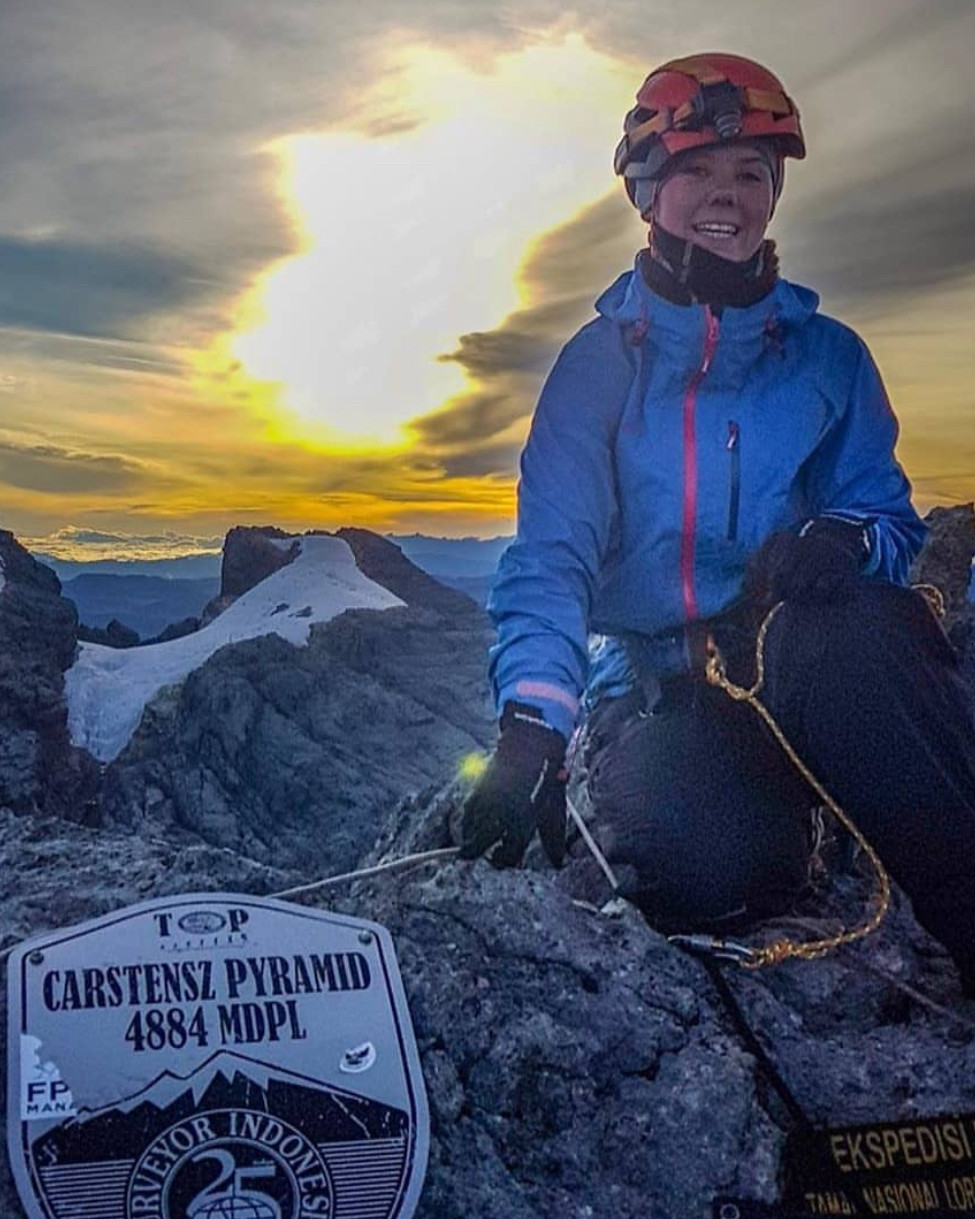
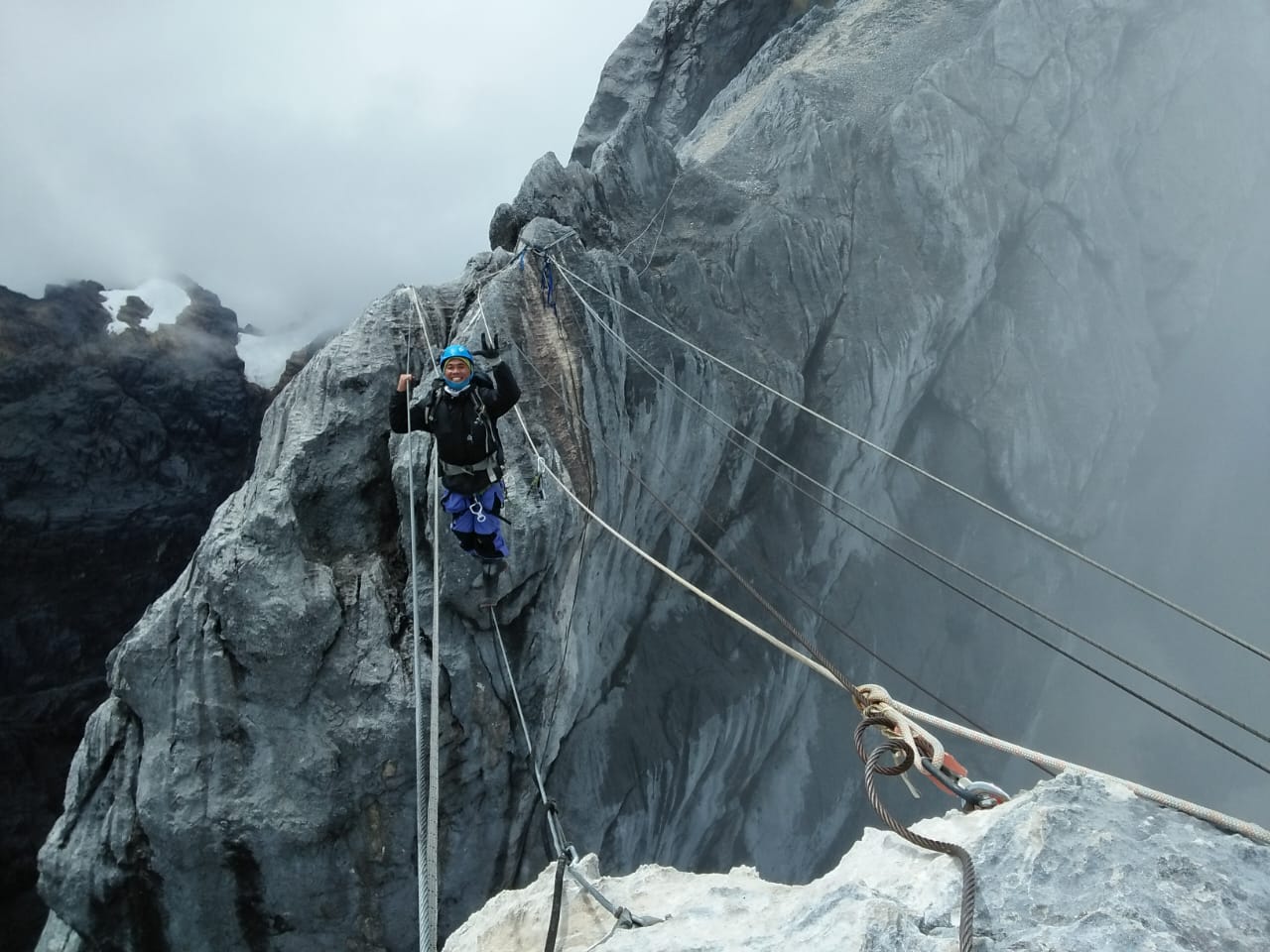
During our ascent, we will climb via the normal route, with its hardest climbing rating at around 5.6 or 5.7 on the Yosemite Decimal System scale. We will be climbing at altitude in mountain boots, and it isn’t uncommon for there to be a light dusting of snow on the rock. For this reason, you should be confident on terrain more difficult than the normal route itself. Having the ability to climb 5.8 or 5.9 routes in mountain boots confidently is the minimum skill level you’ll need to move through the required terrain safely.
The route to the summit has a few noteworthy sections, including ten or more pitches of 4th- and 5th-class climbing to reach the ridgeline from base camp. Following the ridgeline toward the summit, the route negotiates several towers before reaching the infamous Tyrolean Traverse. This traverse has now been fixed with a permanent cable, which greatly increases our safety and makes the process of getting across fairly smooth and reasonable. As you close in on the summit, there are smaller gaps that must be negotiated by climbing down, across, and back up following the apex of the ridge.
How is the gear for this climb different from other Seven Summits expeditions?
Rain, remoteness, and rock climbing all factor into what makes the gear for Carstensz Pyramid a bit different from the other Seven Summits. Much like Vinson, once you are in Irian Jaya, you won’t be able to purchase or replace any gear, which means your kit needs to be checked and double-checked before your expedition. Here are a few key pieces of gear that we will review below to ensure your expedition to Carstensz Pyramid is a success.
Boots. Most of the Seven Summits require double or triple mountaineering boots, but Carstensz presents a unique challenge for footwear. Climbers need to keep their feet warm while also being able to climb technical rock sections. This is where a 3-season mountaineering boot comes in. These boots are warm enough to keep your feet comfortable in cold temperatures, but they also allow climbers to move well in alpine rock terrain. Most 3-season mountaineering boots only have a ¾ metal shank in the footbed, which allows the sole to be semi-flexible for more precise footwork on rock than a mountaineering boot with a full shank like your traditional double or triple boots. We recommend the La Sportiva Trango Tech GTX Mountaineering Boot.
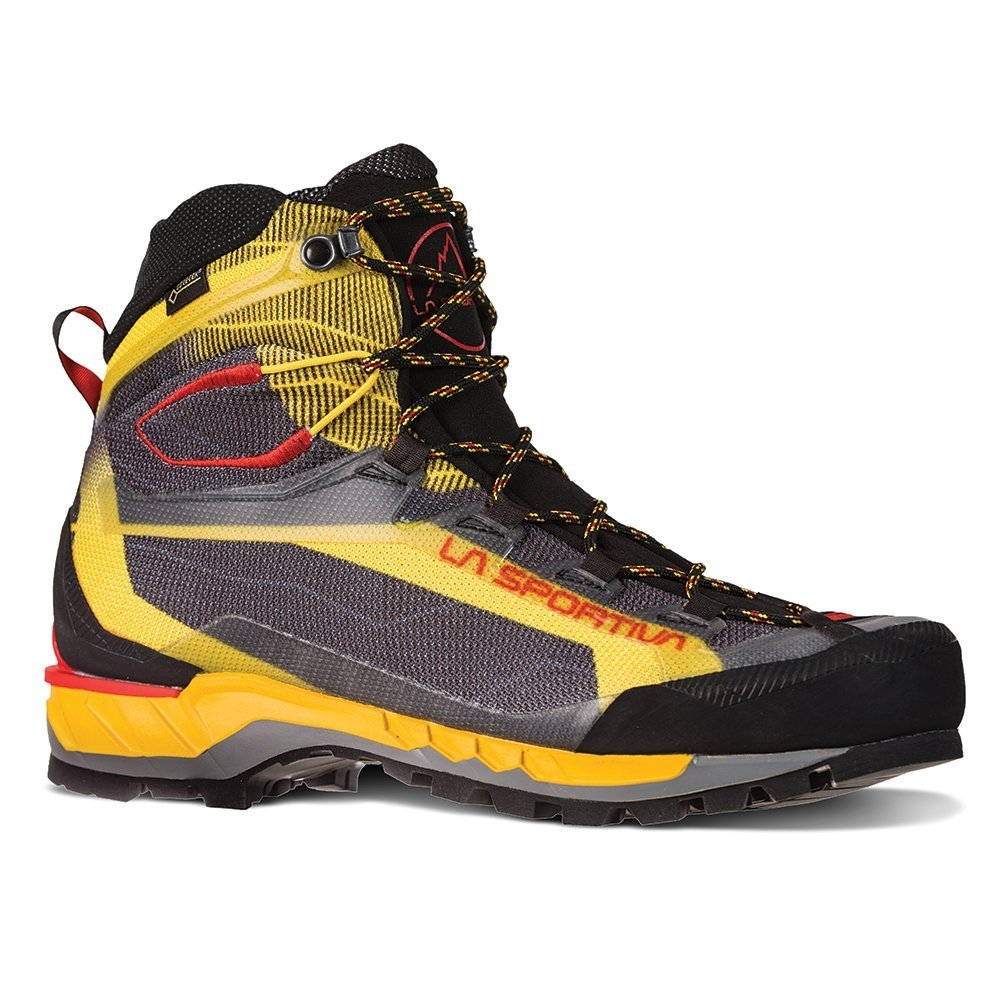
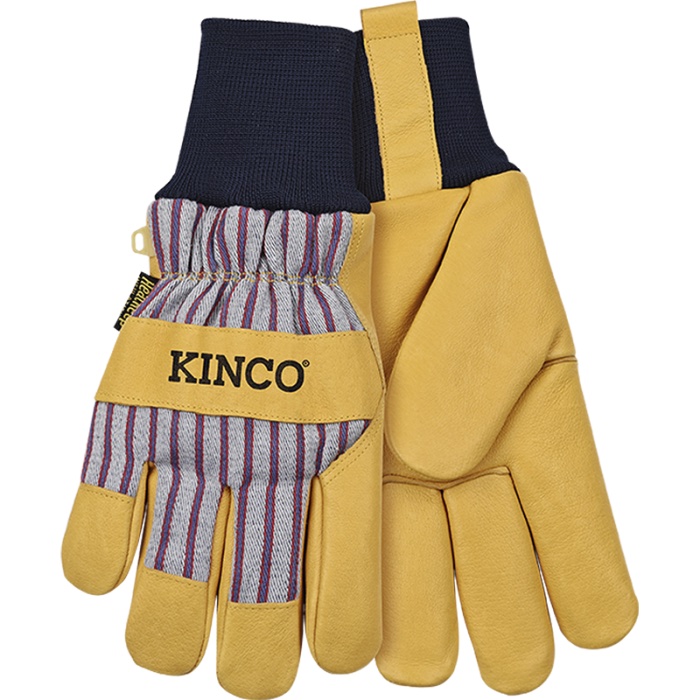
Leather Gloves. On Carstensz Pyramid, you will be climbing technical rock sections, using your ascender to climb fixed lines, and rappelling most of the way from the summit back down to base camp. You will be working with your hands a lot, so keeping them protected and warm is a must! Leather gloves are durable and warm and allow good dexterity during your climb. Consider bringing two pairs for redundancy, as they are likely to get beat up on the climb, and it is good to have a backup if you drop one. We recommend the Kinco Lined Premium Grain Pigskin Knit Wrist Gloves.
Rock Climbing Harness. Usually, we recommend a lightweight mountaineering harness for climbs on any of the other Seven Summits, but as you’ve caught on, Carstensz Pyramid will have some true rock climbing, which means a more robust harness has made its way onto our Gear List. Unlike on peaks like Vinson, Denali, and Everest, you will be rock climbing on Carstensz Pyramid, which means you will want a comfortable harness tailor-made for rock climbing, especially when you are sitting for all the rappels back to base camp. We recommend the Black Diamond Technician Harness.


Bug Spray & Umbrella. Most of the Seven Summits are in cold alpine environments that don’t have many bugs or rain. Carstensz Pyramid is one of the exceptions, as it is located in an equatorial rainforest where ferns, bats, and anteaters dominate the landscape. At base camp, it can be cold, but most certainly, it will be wet, humid, and buggy. This requires a few additions to your standard kit, including bug spray and a rain poncho (or umbrella), to help keep you warm, dry, and bug-free while you adventure around base camp. We recommend the Six Moon Designs Silver Shadow Ultralight Umbrella and Sawyer Picaridin Insect Repellent.
Casual Travel Clothes. While we have this on every gear list, the kind of “town clothes” you bring could make or break your time in Indonesia before the expedition. Expect it to be hot and humid. Bring loose-fitting clothing that will be comfortable in those conditions. In Indonesia, it is customary to dress conservatively, so bring clothes that don’t show your shoulders and cover your legs below the knee. Ideally, bring loose-fitting long pants, long sleeves, and tee shirts.
Click the image to the right to see the full Gear List for Carstensz Pyramid.
Which is the true Seventh Summit – Carstensz Pyramid or Mount Kosciuszko?
This is an age-old question and one that we would be remiss to skip when talking about Carstensz Pyramid. This ongoing debate has firm believers on one side of the aisle or the other, each with solid reasoning for including or excluding each mountain. More recently, some climbers have simply resolved to climb both—because why choose?
However, if you’re looking for an answer, our advice to you is to look within and challenge yourself to define your Seven Summits. Start by asking yourself questions like:
- What are my reasons for climbing the Seven Summits?
- What are my personal rules for climbing?
- Am I here to climb only technically challenging routes?
- Do I want to experience all seven continents and their cultures?
Depending on your reasons, you may have a different idea of what the Seventh Summit is.
When we look back in history, we see the same heated debate. One viewpoint stems from two pioneers of the Seven Summits, Dick Bass and Frank Wells, who viewed the landmass of Australia (not Australasia) as a continent, which tracks with what many of us learned in our younger years. Alternatively, prominent mountaineers Pat Morrow and Reinhold Messner took the approach that a continent should include the continental shelf, which in this case is submerged under the South Pacific Ocean and the Indian Ocean. So when it comes to debating the Seven Summits, one of the first topics is often about how we define a continent: culturally or geologically?
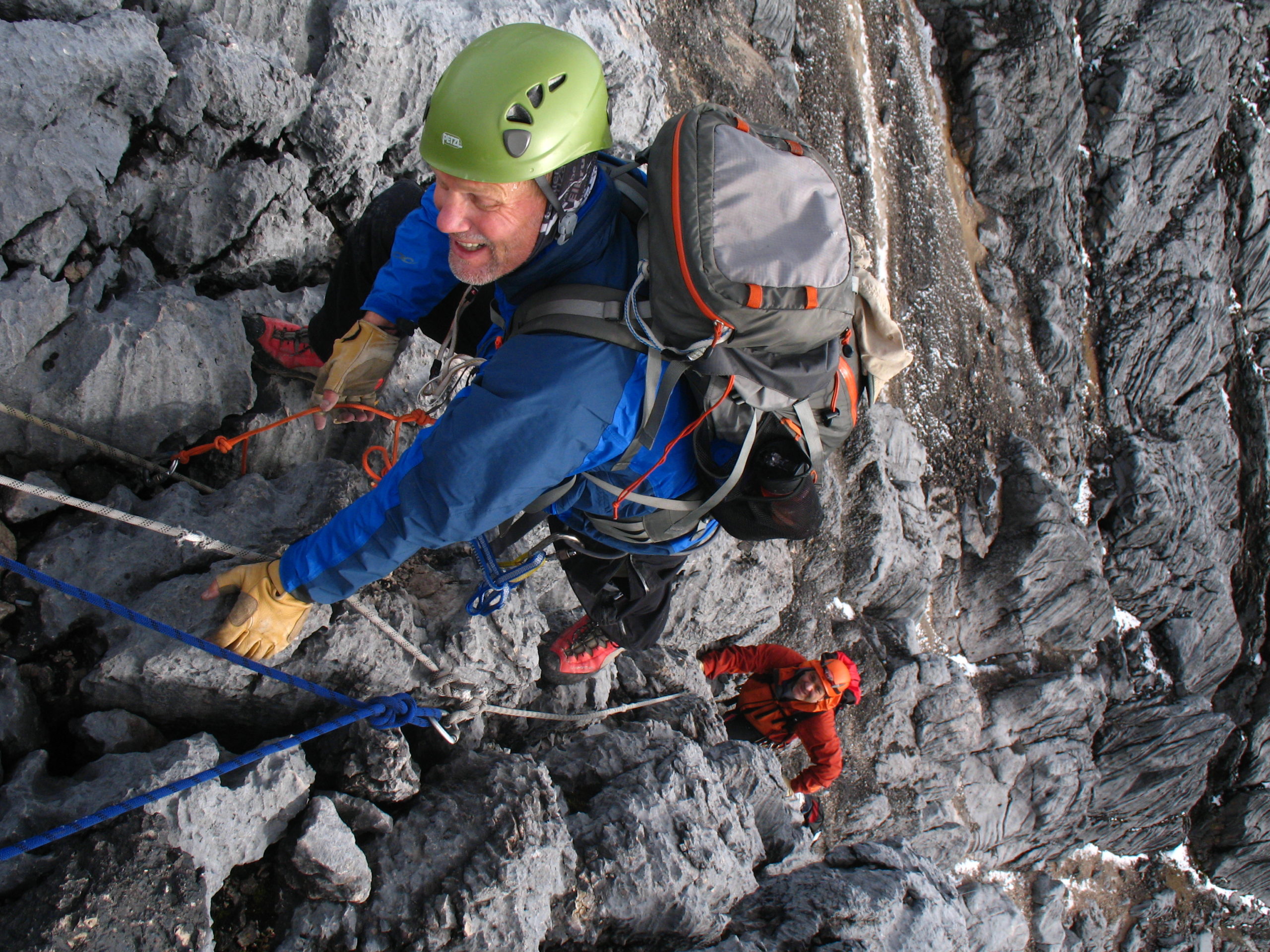
How does the weather impact this expedition?
Our itinerary for Carstensz Pyramid includes SEVEN contingency days. WOW! The big difference here is the weather, one of the biggest factors on this entire expedition. Rain is what’s on tap while you’re in Irian Jaya, and all climbers should be prepared to get wet and bring the appropriate gear, like ponchos and umbrellas.
While afternoon showers are common along the equator, it can really rain at any time of day, and sometimes storms can come on quite suddenly. As you move towards the base of the mountain, the rain will only increase because the air masses moving over the mountain empty their water content before they make their own journey. Teams have waited for a week to get in and out of base camp. This is a real possibility. Expect weather delays. This is true adventure travel, so you’ll need to roll with the punches, bring a good book and music, and purchase flexible return airfares.
What do I need to consider when traveling to Carstensz Pyramid?
Climbers who have been fortunate enough to ascend Carstensz Pyramid have all voiced one common challenge: getting there. Now, we aren’t saying that the climbing is easy—more on that below—but we are saying that anyone who is joining an expedition team to the heart of Irian Jaya should be adaptable, patient, and persistent with a dash of good humor to ensure this is an adventure of a lifetime. Here are a few of our top tips to help your travels go as smoothly as possible.
Getting There: Our expedition meets in Timika, Irian Jaya, Indonesia, a small city within a helicopter flight of Carstensz Pyramid. We recommend booking your flights as far in advance as possible. Using an experienced travel agent is wise for this trip, as flights into and out of Timika can get complicated and may be few and far between. Pay attention to options and layovers so you do not miss any connections, as a missed connection can lead to a 24-hour or more delay in rebooking a flight. And just a quick reminder that getting through customs in Indonesia can be a long process as nothing moves quickly there. Make sure you have your visas sorted, and stay up to date with Indonesian laws and regulations. Check that your passport is not damaged in any way, as Indonesian border control has been known to deny entry over a dog ear or tear. Plan for delays and be ready to wait patiently.
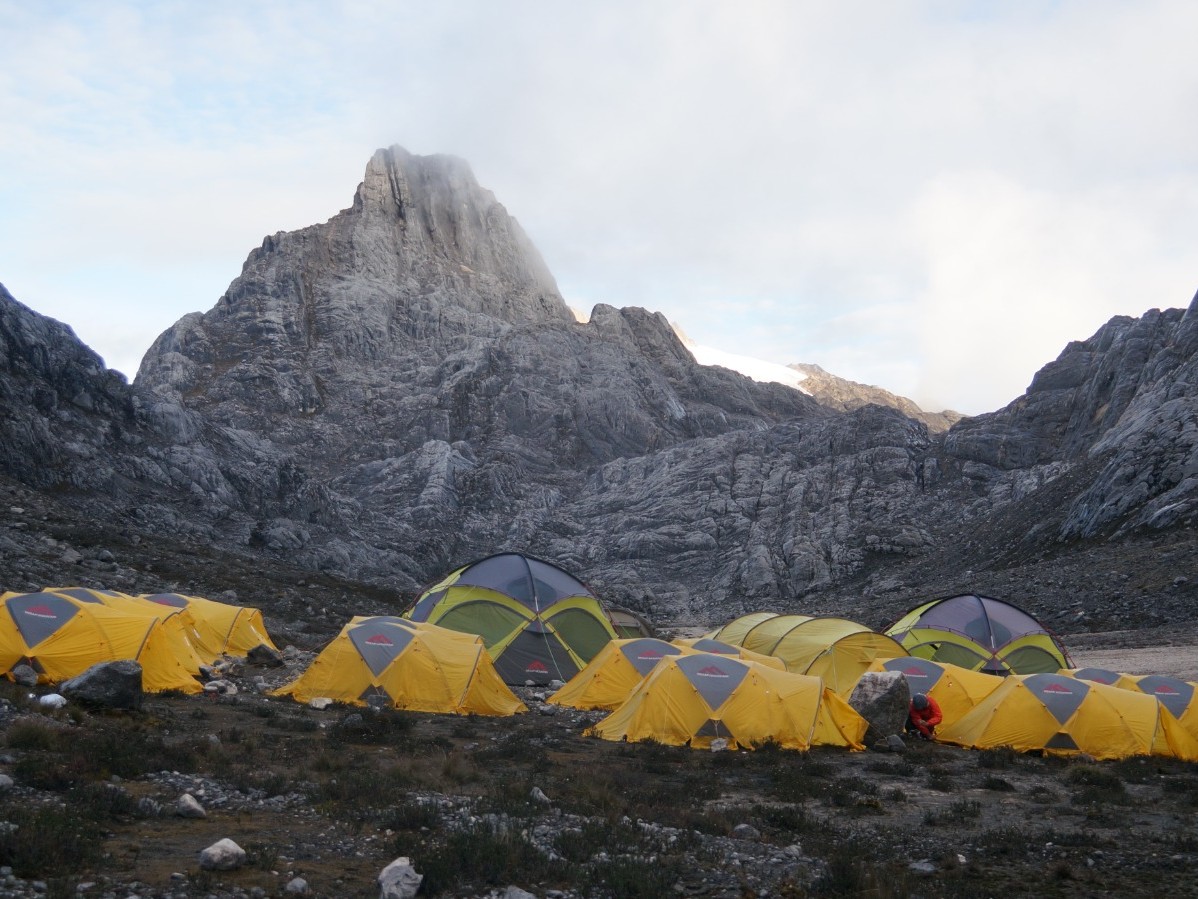
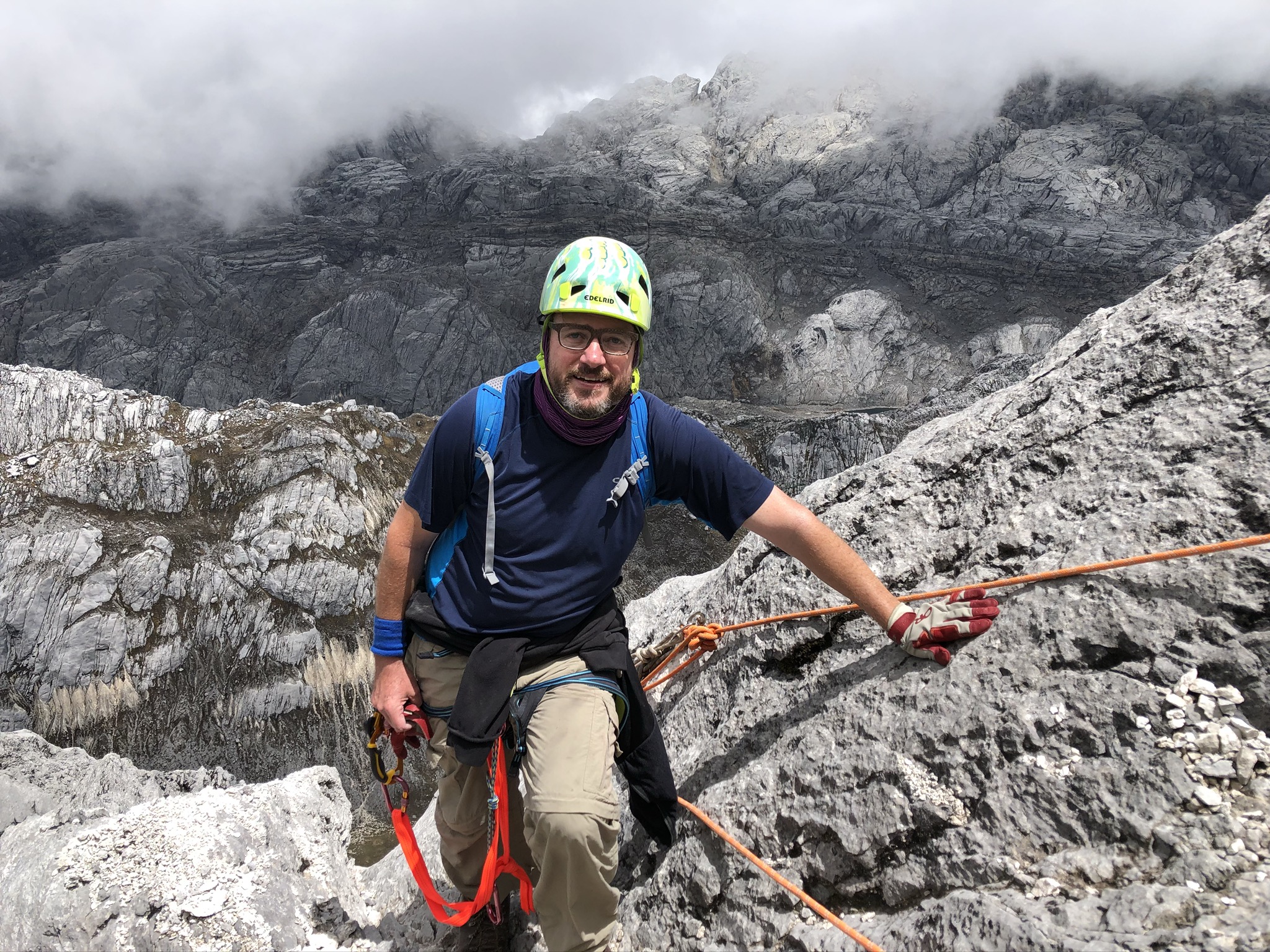
Gear: Once you are in Indonesia, you won’t be able to purchase or place any of your gear. We recommend keeping your climbing boots with you in your carry-on case in case your luggage gets lost. They are expensive, and it may be impossible to replace them if they go missing. Consider this for any other essential items like medications, glasses, etc.
Vaccination Requirements: Rules and regulations surrounding vaccinations may change rapidly. It is your responsibility to check Indonesian governmental websites to ensure your compliance with any requirements surrounding vaccinations.
Click to access the vaccination requirements as of February 2024.
Base Camp Helicopter: We chose to fly in and out of base camp by helicopter to avoid an 8-day trek through the hot, humid, muddy, leech-infested Indonesian jungle. The trek runs very close to the Grasberg Mine (one of the largest gold and copper reserves in the world), and there are strict security protocols in place to protect the mine site. As a result, access by foot is not guaranteed, and there have been violent clashes in the past between the labor force, local tribes, and separatists. Best to avoid it entirely.
Please note that, since July 2023, the U.S. State Department has issued a “Level 4: Do Not Travel” advisory for Central Papua and Highland Papua, where Carstensz Pyramid is located. It is important to know, understand, and accept the risks involved with this expedition.
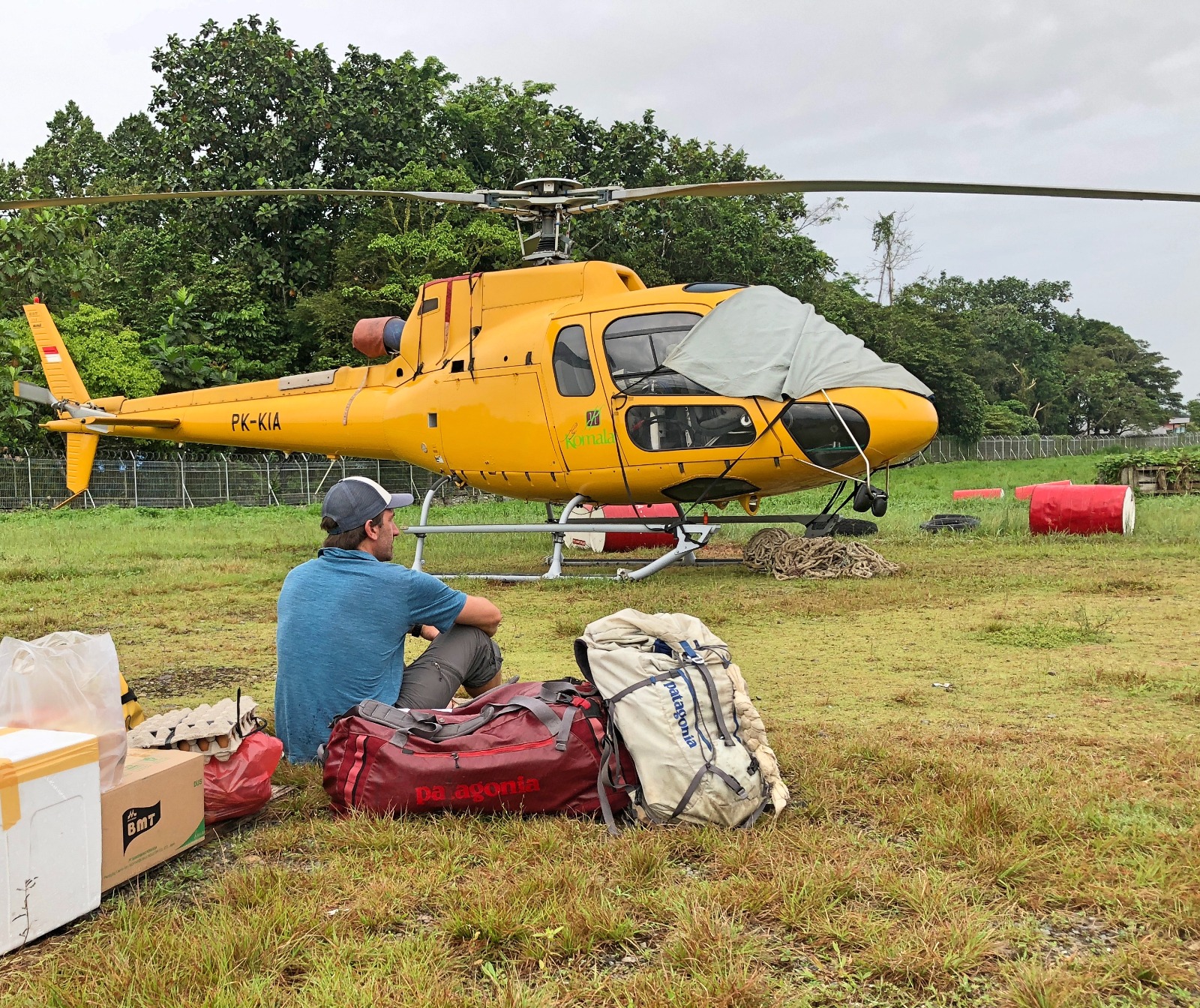
Final Thoughts on Carstensz Pyramid
Climbing Carstensz Pyramid is truly a once-in-a-lifetime opportunity. Our team expedition will be heading out at the end of September which means your chance to get way off, and we mean WAY OFF, the beaten path is quickly approaching. If traveling and climbing in Southeast Asia is just as intriguing to you as it is to all of us, we hope you join us. Our expedition will undoubtedly be an incredible adventure that few have experienced.
If you have any questions that remain unanswered, our team at Climbing the Seven Summits is here to help. Drop us an email at info@climbingthsevensummits.com and someone from our team will reach out to you and offer one-to-one support in making your climbing dreams become a reality.
Safe Descent for All Climbers
We are pleased to announce that our entire 2024 Everest team is now off the mountain.
Most flew back to Kathmandu, which means it's now time for a celebratory long and hot shower and, hopefully, a deep and restful night's sleep at low altitude for all of our climbers, guides, and Sherpas.
Darragh and Aga are descending by foot, enjoying the down trek through the Khumbu Valley. This duo is taking the time to process and appreciate all that they have experienced before coming back to civilization.
As a team we now turn out attention to packing up camp, sweeping the mountain of gear, and removing any trace of our expedition from Everest Base Camp and the various high camps along the route. Here at Climbing the Seven Summits, we are firm believers in Leave No Trace (many of our guides ever carry Leave No Trace certifications) and we are proud to uphold these standards on all of our expeditions, Everest included.
Jesse and Tomi on the Hillary Step May 22, no crowds. Photo Credit: Tomi Ceppi
Descent Progress on Everest
22nd May; Good evening from the Himalaya
The team are doing well on their descents. To give you an update on their positions;
Everest Base Camp
- Aga O & Migma Dorjee
- Marc B & Naren
Camp 3 & descending to Camp 2
- Chen (Blake) Li with Abiral
Camp 2
- Riki J & Lhakpa Rangdu
- Ruben S & Pasang Tendi
- Jesse W & Tomi Ceppi
- Darragh & Dawa Jangbu
South Col
- Yinghong H & Jangbu
- Pascale S & Astani
- Chen (Blake) Li

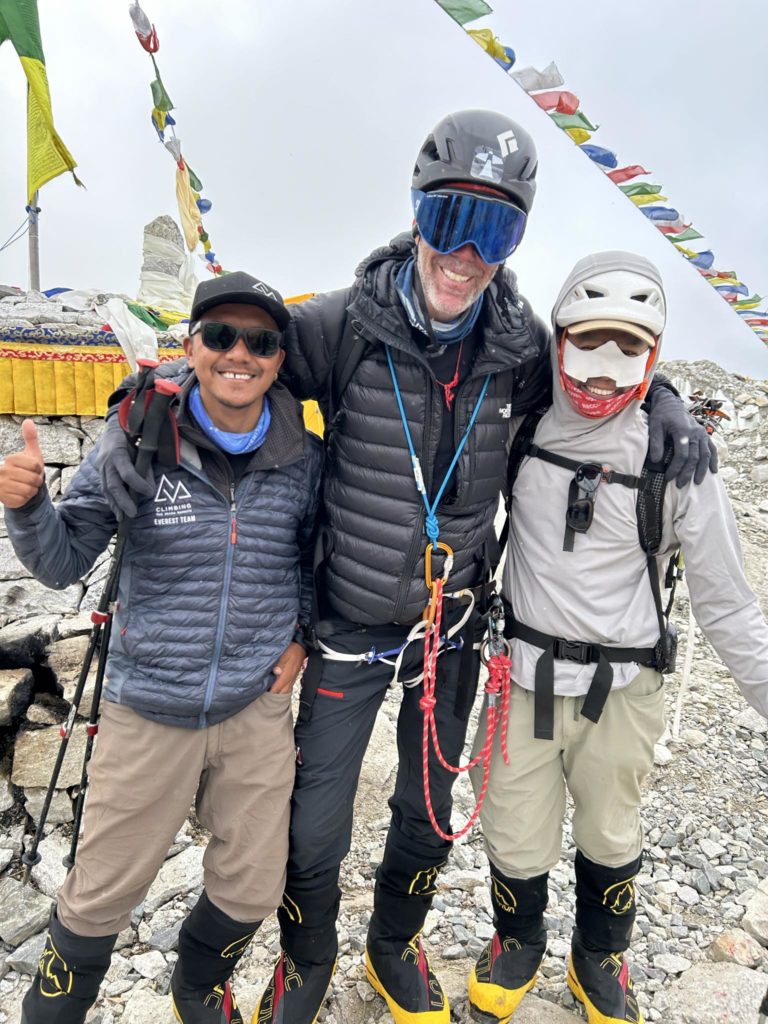
3 Peaks Private Climb
Private 3 Peaks Climb
Contact us for pricing, dates, and availability.
Our 3 Peaks expedition is one of our most popular programs. It offers incredible Himalayan climbing in a relatively condensed timeframe at a great price. It’s one of the best bang-for-buck trips you can take when it comes to climbing hours.
You start your adventure by meeting in Kathmandu, Nepal. Here, you will do thorough gear checks, have team briefings, and pack and organize our gear for the climbs head.
Following our time in Kathmandu, you will fly to Lukla to start the trek. You land at the Hillary runway at roughly 9,000ft/3,000m. From the moment you land in Lukla, you will be at altitude. It’s important to take it easy and let your body adjust to the altitude naturally.
You will love the famed Everest Base Camp trek, which is perhaps the best and most iconic trek in the world and should be on everyone’s bucket list. What makes the beauty and excitement of trekking in this majestic land even better is being part of the lovely and hospitable Sherpa culture. Sherpa are known the world over for their graciousness and generosity.
Enjoy spending time visiting famous cultural and religious sights on our way through this scenic valley in the shadow of the world’s highest mountains. Our slow acclimatization schedule means there is plenty of time to explore landmarks like the famous Tengboche Monastery, where you can stop by to visit a High Lama and receive a blessing, take time to explore the famous Namche Bazaar – the Sherpa capital, or have a beer in the world’s highest pub. Passing by countless Tibetan Buddhist stupas and chortens, you will feel the rich culture of Tibetan Buddhism come alive.
We choose to implement a slow acclimatization schedule, not just so you can take in the sights and sounds of the valley, but to ensure you enjoy your trek and climbs and feel great throughout.
Altitude isn’t something to be feared; it’s achievable for most people, but it is a process that can’t be rushed. Generic treks that move too quickly often produce disgruntled, unwell people because their bodies struggle to adjust.
You will likely be trekking alongside an actual Everest summit team and climbing your first peak, Lobuche. In fact, Lobuche is such a great, scenic climb (offering similar terrain and climbing to Everest, albeit at a lower altitude) that all of our Everest climbers make the ascent of Lobuche en route to Everest base camp as one of their acclimatization rotations.
From Lobuche, you continue your trek to Everest Base Camp, where you can celebrate with a two-night visit to Base Camp proper, staying at CTSS’ famed camp. Here, you will also have the opportunity for additional training and ice climbing in the lower part of the Khumbu icefall, as well as a free day to unwind and explore.
Leaving Base Camp, the action heats up as the climbing continues. Crossing the legendary Khumbu glacier, traverse into the remote Pokalde Base Camp – an awe-inspiring bowl of Himalayan expanse where you will prepare for and stage your next climb – Pokalde.
Following your ascent of Pokalde, you will cross into the Imja Tse valley for a climb of the world-famous Island Peak, the culmination of your 3 Peaks expedition and the highest altitude climb of the three.
Following your summits, enjoy the descent back down the valley, taking in your achievement in this remarkable corner of the world before flying back to Kathmandu and onward home.
Sample itinerary. CTSS will work with our private climbers to create an ideal climb itinerary that meets their specific needs.
Please contact us for more information.
- Day 1: Arrival Day
- Day 2: Kathmandu Day
- Day 3: Fly to Lukla/Phakding
- Day 4: Trek to Namche
- Day 5: Rest Day
- Day 6: Trek to Tengboche
- Day 7: Rest Day
- Day 8: Trek to Pheriche
- Day 9: Rest Day
- Day 10: Trek to Lobuche Base Camp
- Day 11: Trek to Lobuche High Camp
- Day 12: Move to Lobuche High Camp
- Day 13: Acclimatize
- Day 14: Summit and descend to Lobuche Base Camp
- Day 15: Trek to Everest Base Camp
- Day 16: Rest at Everest Base Camp + Training
- Day 17: Trek to Lobuche
- Day 18: Trek to Pokalde High Camp via Kongma La
- Day 19: Climb Pokalde & descend to Chhukung
- Day 20: Trek from Chhukung to Island Peak Base Camp
- Day 21: Climb Island Peak return Chhukung
- Dday 22: Trek Chhukung to Pangboche
- Day 23: Pangboche to Namche
- Day 24: Namche to Lukla
- Day 25: Lukla flight to KTM
- Day 26: Departure Day
- Day 27: Contingency Day
Our expeditions are designed to be fully inclusive, except for some services and items of a personal nature, like flights, gear, and insurance. Here’s a detailed list so you know what to expect.
Included in the Private 3 Peaks Climb
- Leadership, strategy, climbing oversight, including full support for a summit attempt
- Climbing Sherpa to assist with carrying personal gear
- Full expedition logistics, weather forecasts, etc
- Climbing permits for Lobuche, Pokalde & Island Peak
- Training and skills refresher clinics at Lobuche & Everest Base Camp
- Domestic flights to and from Lukla
- In-country transport associated with the program itinerary
- Airport transfers
- Accommodation in Nepal, including hotels and teahouses (single occupancy)
- 2 nights accommodation at Everest Base Camp proper
- Welcome dinner & meals throughout the expedition
- Access to medical and communications gear
- Mountain camp infrastructure and logistics, including tents
- On mountain meals
Excluded from the Private 3 Peaks Climb
- International flights to Kathmandu, Nepal
- Airport arrival or departure taxes
- Associated travel expenses, including Visa, Passport,
- Reciprocity Fees, Vaccination Charges, Excess Baggage
- Optional excursions not included in the itinerary or additional days before or after the scheduled program
- Personal climbing equipment, clothing, toiletries, etc
- Personal sundries including but are not limited to meals while in Kathmandu, personal snacks, specialized high altitude climbing food, alcoholic beverages, laundry services, medical expenses, gratuities, 3rd party internet, email or phone charges, bottled water, specialty coffees
- Sherpa tip pool
- Guide tip (customary but optional)
- Expenses incurred due to events outside CTSS's control, such as delays or interruptions, political events, natural events, or disasters. These may include additional expenses, such as extra hotel nights, resulting from delays.
- Trip insurance policy that includes personal climbing, medical, rescue, evacuation, trip interruption, and trip cancellation insurance
- Unused Contingency Days at the end of your program: CTSS covers one night in the hotel in Kathmandu on your return. If you decide to stay longer in Kathmandu beyond this night, those costs are your responsibility. We highly recommend that you plan to be away from home for the entire duration of the expedition, including contingencies days; you book a flexible return airfare so you can move your flight forward if you don’t use all of the contingency days or push it back as you need.
All prices are in US Dollars.
CTSS requires clients to buy trip insurance for all expeditions. Please see our page on trip insurance and cancellation policy for more information.
All payments once submitted are non-refundable and non-transferable. If balances are not received by specified dates, the client forfeits their place on the program and any prior fees paid.
Everest & Lhotse Summits! 22nd May
Morning 22nd May
Good morning from the Himalaya. We are delighted to announce 100% of our third and final wave of Everest climbers stood on top today, taking our season total to 59 Everest summits!
Everyone who left on the summit bid across the season was successful and showed incredible commitment, care and teamwork. We couldn't be prouder or more delighted to share in the journey with such a prepared, strong group of climbers and staff.
Congratulations to:
- Mr Jesse Willms (Canada)
- Mr Tomas Ceppi (Argentina)
- Mr Chen (Blake) Li (China)
- Ms Yinghong Hu (China)
- Ms Pascale Soubrane (France)
- Mr Jangbu Sherpa (Nepal/USA)
- Mr Abiral Rai (Nepal)
- Mr Nar Bahadur Astani (Nepal)
- Mr Chhedan Bhote (Nepal)
- Mr Tenzi Sherpa (Nepal)
- Mr Dawa Dendi Sherpa - CTSS Sirdar (Nepal)
- Mr Dathanduk Bhote (Nepal)
- Mr Lhakpa Chhetar Sherpa (Nepal)
- Mr Nima Dorjee Sherpa (Nepal)
To top off the morning, we also have a Lhotse summit from Mr Darragh Ó hAodha (Ireland) alongside Dawa Jangbu Sherpa (Nepal). Darragh remarkably completed the Everest/Lhotse double header by summitting Everest yesterday (21st May) and Lhotse today (22nd May)
We are looking forward to celebrating with everyone following their safe descents.

